What is the speed of light?
The speed of light is the speed limit of the universe. Or is it?


What is a light-year?
- Speed of light FAQs
- Special relativity
- Faster than light
- Slowing down light
- Faster-than-light travel
Bibliography
The speed of light traveling through a vacuum is exactly 299,792,458 meters (983,571,056 feet) per second. That's about 186,282 miles per second — a universal constant known in equations as "c," or light speed.
According to physicist Albert Einstein 's theory of special relativity , on which much of modern physics is based, nothing in the universe can travel faster than light. The theory states that as matter approaches the speed of light, the matter's mass becomes infinite. That means the speed of light functions as a speed limit on the whole universe . The speed of light is so immutable that, according to the U.S. National Institute of Standards and Technology , it is used to define international standard measurements like the meter (and by extension, the mile, the foot and the inch). Through some crafty equations, it also helps define the kilogram and the temperature unit Kelvin .
But despite the speed of light's reputation as a universal constant, scientists and science fiction writers alike spend time contemplating faster-than-light travel. So far no one's been able to demonstrate a real warp drive, but that hasn't slowed our collective hurtle toward new stories, new inventions and new realms of physics.
Related: Special relativity holds up to a high-energy test
A l ight-year is the distance that light can travel in one year — about 6 trillion miles (10 trillion kilometers). It's one way that astronomers and physicists measure immense distances across our universe.
Light travels from the moon to our eyes in about 1 second, which means the moon is about 1 light-second away. Sunlight takes about 8 minutes to reach our eyes, so the sun is about 8 light minutes away. Light from Alpha Centauri , which is the nearest star system to our own, requires roughly 4.3 years to get here, so Alpha Centauri is 4.3 light-years away.
"To obtain an idea of the size of a light-year, take the circumference of the Earth (24,900 miles), lay it out in a straight line, multiply the length of the line by 7.5 (the corresponding distance is one light-second), then place 31.6 million similar lines end to end," NASA's Glenn Research Center says on its website . "The resulting distance is almost 6 trillion (6,000,000,000,000) miles!"
Stars and other objects beyond our solar system lie anywhere from a few light-years to a few billion light-years away. And everything astronomers "see" in the distant universe is literally history. When astronomers study objects that are far away, they are seeing light that shows the objects as they existed at the time that light left them.
This principle allows astronomers to see the universe as it looked after the Big Bang , which took place about 13.8 billion years ago. Objects that are 10 billion light-years away from us appear to astronomers as they looked 10 billion years ago — relatively soon after the beginning of the universe — rather than how they appear today.
Related: Why the universe is all history
Speed of light FAQs answered by an expert
We asked Rob Zellem, exoplanet-hunter and staff scientist at NASA's Jet Propulsion Lab, a few frequently asked questions about the speed of light.

Dr. Rob Zellem is a staff scientist at NASA's Jet Propulsion Laboratory, a federally funded research and development center operated by the California Institute of Technology. Rob is the project lead for Exoplanet Watch, a citizen science project to observe exoplanets, planets outside of our own solar system, with small telescopes. He is also the Science Calibration lead for the Nancy Grace Roman Space Telescope's Coronagraph Instrument, which will directly image exoplanets.
What is faster than the speed of light?
Nothing! Light is a "universal speed limit" and, according to Einstein's theory of relativity, is the fastest speed in the universe: 300,000 kilometers per second (186,000 miles per second).
Is the speed of light constant?
The speed of light is a universal constant in a vacuum, like the vacuum of space. However, light *can* slow down slightly when it passes through an absorbing medium, like water (225,000 kilometers per second = 140,000 miles per second) or glass (200,000 kilometers per second = 124,000 miles per second).
Who discovered the speed of light?
One of the first measurements of the speed of light was by Rømer in 1676 by observing the moons of Jupiter . The speed of light was first measured to high precision in 1879 by the Michelson-Morley Experiment.
How do we know the speed of light?
Rømer was able to measure the speed of light by observing eclipses of Jupiter's moon Io. When Jupiter was closer to Earth, Rømer noted that eclipses of Io occurred slightly earlier than when Jupiter was farther away. Rømer attributed this effect due the time it takes for light to travel over the longer distance when Jupiter was farther from the Earth.
How did we learn the speed of light?

As early as the 5th century, Greek philosophers like Empedocles and Aristotle disagreed on the nature of light speed. Empedocles proposed that light, whatever it was made of, must travel and therefore, must have a rate of travel. Aristotle wrote a rebuttal of Empedocles' view in his own treatise, On Sense and the Sensible , arguing that light, unlike sound and smell, must be instantaneous. Aristotle was wrong, of course, but it would take hundreds of years for anyone to prove it.
In the mid 1600s, the Italian astronomer Galileo Galilei stood two people on hills less than a mile apart. Each person held a shielded lantern. One uncovered his lantern; when the other person saw the flash, he uncovered his too. But Galileo's experimental distance wasn't far enough for his participants to record the speed of light. He could only conclude that light traveled at least 10 times faster than sound.
In the 1670s, Danish astronomer Ole Rømer tried to create a reliable timetable for sailors at sea, and according to NASA , accidentally came up with a new best estimate for the speed of light. To create an astronomical clock, he recorded the precise timing of the eclipses of Jupiter's moon , Io, from Earth . Over time, Rømer observed that Io's eclipses often differed from his calculations. He noticed that the eclipses appeared to lag the most when Jupiter and Earth were moving away from one another, showed up ahead of time when the planets were approaching and occurred on schedule when the planets were at their closest or farthest points. This observation demonstrated what we today know as the Doppler effect, the change in frequency of light or sound emitted by a moving object that in the astronomical world manifests as the so-called redshift , the shift towards "redder", longer wavelengths in objects speeding away from us. In a leap of intuition, Rømer determined that light was taking measurable time to travel from Io to Earth.
Rømer used his observations to estimate the speed of light. Since the size of the solar system and Earth's orbit wasn't yet accurately known, argued a 1998 paper in the American Journal of Physics , he was a bit off. But at last, scientists had a number to work with. Rømer's calculation put the speed of light at about 124,000 miles per second (200,000 km/s).
In 1728, English physicist James Bradley based a new set of calculations on the change in the apparent position of stars caused by Earth's travels around the sun. He estimated the speed of light at 185,000 miles per second (301,000 km/s) — accurate to within about 1% of the real value, according to the American Physical Society .
Two new attempts in the mid-1800s brought the problem back to Earth. French physicist Hippolyte Fizeau set a beam of light on a rapidly rotating toothed wheel, with a mirror set up 5 miles (8 km) away to reflect it back to its source. Varying the speed of the wheel allowed Fizeau to calculate how long it took for the light to travel out of the hole, to the adjacent mirror, and back through the gap. Another French physicist, Leon Foucault, used a rotating mirror rather than a wheel to perform essentially the same experiment. The two independent methods each came within about 1,000 miles per second (1,609 km/s) of the speed of light.

Another scientist who tackled the speed of light mystery was Poland-born Albert A. Michelson, who grew up in California during the state's gold rush period, and honed his interest in physics while attending the U.S. Naval Academy, according to the University of Virginia . In 1879, he attempted to replicate Foucault's method of determining the speed of light, but Michelson increased the distance between mirrors and used extremely high-quality mirrors and lenses. Michelson's result of 186,355 miles per second (299,910 km/s) was accepted as the most accurate measurement of the speed of light for 40 years, until Michelson re-measured it himself. In his second round of experiments, Michelson flashed lights between two mountain tops with carefully measured distances to get a more precise estimate. And in his third attempt just before his death in 1931, according to the Smithsonian's Air and Space magazine, he built a mile-long depressurized tube of corrugated steel pipe. The pipe simulated a near-vacuum that would remove any effect of air on light speed for an even finer measurement, which in the end was just slightly lower than the accepted value of the speed of light today.
Michelson also studied the nature of light itself, wrote astrophysicist Ethan Siegal in the Forbes science blog, Starts With a Bang . The best minds in physics at the time of Michelson's experiments were divided: Was light a wave or a particle?
Michelson, along with his colleague Edward Morley, worked under the assumption that light moved as a wave, just like sound. And just as sound needs particles to move, Michelson and Morley and other physicists of the time reasoned, light must have some kind of medium to move through. This invisible, undetectable stuff was called the "luminiferous aether" (also known as "ether").
Though Michelson and Morley built a sophisticated interferometer (a very basic version of the instrument used today in LIGO facilities), Michelson could not find evidence of any kind of luminiferous aether whatsoever. Light, he determined, can and does travel through a vacuum.
"The experiment — and Michelson's body of work — was so revolutionary that he became the only person in history to have won a Nobel Prize for a very precise non-discovery of anything," Siegal wrote. "The experiment itself may have been a complete failure, but what we learned from it was a greater boon to humanity and our understanding of the universe than any success would have been!"
Special relativity and the speed of light
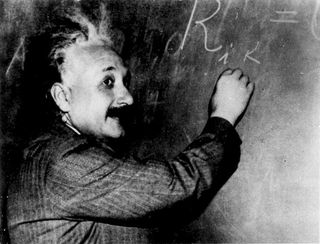
Einstein's theory of special relativity unified energy, matter and the speed of light in a famous equation: E = mc^2. The equation describes the relationship between mass and energy — small amounts of mass (m) contain, or are made up of, an inherently enormous amount of energy (E). (That's what makes nuclear bombs so powerful: They're converting mass into blasts of energy.) Because energy is equal to mass times the speed of light squared, the speed of light serves as a conversion factor, explaining exactly how much energy must be within matter. And because the speed of light is such a huge number, even small amounts of mass must equate to vast quantities of energy.
In order to accurately describe the universe, Einstein's elegant equation requires the speed of light to be an immutable constant. Einstein asserted that light moved through a vacuum, not any kind of luminiferous aether, and in such a way that it moved at the same speed no matter the speed of the observer.
Think of it like this: Observers sitting on a train could look at a train moving along a parallel track and think of its relative movement to themselves as zero. But observers moving nearly the speed of light would still perceive light as moving away from them at more than 670 million mph. (That's because moving really, really fast is one of the only confirmed methods of time travel — time actually slows down for those observers, who will age slower and perceive fewer moments than an observer moving slowly.)
In other words, Einstein proposed that the speed of light doesn't vary with the time or place that you measure it, or how fast you yourself are moving.
Therefore, objects with mass cannot ever reach the speed of light. If an object ever did reach the speed of light, its mass would become infinite. And as a result, the energy required to move the object would also become infinite: an impossibility.
That means if we base our understanding of physics on special relativity (which most modern physicists do), the speed of light is the immutable speed limit of our universe — the fastest that anything can travel.
What goes faster than the speed of light?
Although the speed of light is often referred to as the universe's speed limit, the universe actually expands even faster. The universe expands at a little more than 42 miles (68 kilometers) per second for each megaparsec of distance from the observer, wrote astrophysicist Paul Sutter in a previous article for Space.com . (A megaparsec is 3.26 million light-years — a really long way.)
In other words, a galaxy 1 megaparsec away appears to be traveling away from the Milky Way at a speed of 42 miles per second (68 km/s), while a galaxy two megaparsecs away recedes at nearly 86 miles per second (136 km/s), and so on.
"At some point, at some obscene distance, the speed tips over the scales and exceeds the speed of light, all from the natural, regular expansion of space," Sutter explained. "It seems like it should be illegal, doesn't it?"
Special relativity provides an absolute speed limit within the universe, according to Sutter, but Einstein's 1915 theory regarding general relativity allows different behavior when the physics you're examining are no longer "local."
"A galaxy on the far side of the universe? That's the domain of general relativity, and general relativity says: Who cares! That galaxy can have any speed it wants, as long as it stays way far away, and not up next to your face," Sutter wrote. "Special relativity doesn't care about the speed — superluminal or otherwise — of a distant galaxy. And neither should you."
Does light ever slow down?

Light in a vacuum is generally held to travel at an absolute speed, but light traveling through any material can be slowed down. The amount that a material slows down light is called its refractive index. Light bends when coming into contact with particles, which results in a decrease in speed.
For example, light traveling through Earth's atmosphere moves almost as fast as light in a vacuum, slowing down by just three ten-thousandths of the speed of light. But light passing through a diamond slows to less than half its typical speed, PBS NOVA reported. Even so, it travels through the gem at over 277 million mph (almost 124,000 km/s) — enough to make a difference, but still incredibly fast.
Light can be trapped — and even stopped — inside ultra-cold clouds of atoms, according to a 2001 study published in the journal Nature . More recently, a 2018 study published in the journal Physical Review Letters proposed a new way to stop light in its tracks at "exceptional points," or places where two separate light emissions intersect and merge into one.
Researchers have also tried to slow down light even when it's traveling through a vacuum. A team of Scottish scientists successfully slowed down a single photon, or particle of light, even as it moved through a vacuum, as described in their 2015 study published in the journal Science . In their measurements, the difference between the slowed photon and a "regular" photon was just a few millionths of a meter, but it demonstrated that light in a vacuum can be slower than the official speed of light.
Can we travel faster than light?
— Spaceship could fly faster than light
— Here's what the speed of light looks like in slow motion
— Why is the speed of light the way it is?
Science fiction loves the idea of "warp speed." Faster-than-light travel makes countless sci-fi franchises possible, condensing the vast expanses of space and letting characters pop back and forth between star systems with ease.
But while faster-than-light travel isn't guaranteed impossible, we'd need to harness some pretty exotic physics to make it work. Luckily for sci-fi enthusiasts and theoretical physicists alike, there are lots of avenues to explore.
All we have to do is figure out how to not move ourselves — since special relativity would ensure we'd be long destroyed before we reached high enough speed — but instead, move the space around us. Easy, right?
One proposed idea involves a spaceship that could fold a space-time bubble around itself. Sounds great, both in theory and in fiction.
"If Captain Kirk were constrained to move at the speed of our fastest rockets, it would take him a hundred thousand years just to get to the next star system," said Seth Shostak, an astronomer at the Search for Extraterrestrial Intelligence (SETI) Institute in Mountain View, California, in a 2010 interview with Space.com's sister site LiveScience . "So science fiction has long postulated a way to beat the speed of light barrier so the story can move a little more quickly."
Without faster-than-light travel, any "Star Trek" (or "Star War," for that matter) would be impossible. If humanity is ever to reach the farthest — and constantly expanding — corners of our universe, it will be up to future physicists to boldly go where no one has gone before.
Additional resources
For more on the speed of light, check out this fun tool from Academo that lets you visualize how fast light can travel from any place on Earth to any other. If you’re more interested in other important numbers, get familiar with the universal constants that define standard systems of measurement around the world with the National Institute of Standards and Technology . And if you’d like more on the history of the speed of light, check out the book " Lightspeed: The Ghostly Aether and the Race to Measure the Speed of Light " (Oxford, 2019) by John C. H. Spence.
Aristotle. “On Sense and the Sensible.” The Internet Classics Archive, 350AD. http://classics.mit.edu/Aristotle/sense.2.2.html .
D’Alto, Nick. “The Pipeline That Measured the Speed of Light.” Smithsonian Magazine, January 2017. https://www.smithsonianmag.com/air-space-magazine/18_fm2017-oo-180961669/ .
Fowler, Michael. “Speed of Light.” Modern Physics. University of Virginia. Accessed January 13, 2022. https://galileo.phys.virginia.edu/classes/252/spedlite.html#Albert%20Abraham%20Michelson .
Giovannini, Daniel, Jacquiline Romero, Václav Potoček, Gergely Ferenczi, Fiona Speirits, Stephen M. Barnett, Daniele Faccio, and Miles J. Padgett. “Spatially Structured Photons That Travel in Free Space Slower than the Speed of Light.” Science, February 20, 2015. https://www.science.org/doi/abs/10.1126/science.aaa3035 .
Goldzak, Tamar, Alexei A. Mailybaev, and Nimrod Moiseyev. “Light Stops at Exceptional Points.” Physical Review Letters 120, no. 1 (January 3, 2018): 013901. https://doi.org/10.1103/PhysRevLett.120.013901 .
Hazen, Robert. “What Makes Diamond Sparkle?” PBS NOVA, January 31, 2000. https://www.pbs.org/wgbh/nova/article/diamond-science/ .
“How Long Is a Light-Year?” Glenn Learning Technologies Project, May 13, 2021. https://www.grc.nasa.gov/www/k-12/Numbers/Math/Mathematical_Thinking/how_long_is_a_light_year.htm .
American Physical Society News. “July 1849: Fizeau Publishes Results of Speed of Light Experiment,” July 2010. http://www.aps.org/publications/apsnews/201007/physicshistory.cfm .
Liu, Chien, Zachary Dutton, Cyrus H. Behroozi, and Lene Vestergaard Hau. “Observation of Coherent Optical Information Storage in an Atomic Medium Using Halted Light Pulses.” Nature 409, no. 6819 (January 2001): 490–93. https://doi.org/10.1038/35054017 .
NIST. “Meet the Constants.” October 12, 2018. https://www.nist.gov/si-redefinition/meet-constants .
Ouellette, Jennifer. “A Brief History of the Speed of Light.” PBS NOVA, February 27, 2015. https://www.pbs.org/wgbh/nova/article/brief-history-speed-light/ .
Shea, James H. “Ole Ro/Mer, the Speed of Light, the Apparent Period of Io, the Doppler Effect, and the Dynamics of Earth and Jupiter.” American Journal of Physics 66, no. 7 (July 1, 1998): 561–69. https://doi.org/10.1119/1.19020 .
Siegel, Ethan. “The Failed Experiment That Changed The World.” Forbes, April 21, 2017. https://www.forbes.com/sites/startswithabang/2017/04/21/the-failed-experiment-that-changed-the-world/ .
Stern, David. “Rømer and the Speed of Light,” October 17, 2016. https://pwg.gsfc.nasa.gov/stargaze/Sun4Adop1.htm .
Join our Space Forums to keep talking space on the latest missions, night sky and more! And if you have a news tip, correction or comment, let us know at: [email protected].
Get the Space.com Newsletter
Breaking space news, the latest updates on rocket launches, skywatching events and more!

Vicky Stein is a science writer based in California. She has a bachelor's degree in ecology and evolutionary biology from Dartmouth College and a graduate certificate in science writing from the University of California, Santa Cruz (2018). Afterwards, she worked as a news assistant for PBS NewsHour, and now works as a freelancer covering anything from asteroids to zebras. Follow her most recent work (and most recent pictures of nudibranchs) on Twitter.
Car-size asteroid gives Earth a super-close shave with flyby closer than some satellites
SpaceX launches advanced weather satellite for US Space Force (video)
Cosmonaut Muhammed Faris, first Syrian in space, dies at 72
Most Popular
- 2 This Week In Space podcast: Episode 107 — Mars Sample Return Blues
- 3 Lego Star Wars Millennium Falcon (2024) review
- 4 Those magic minutes during April 8's solar eclipse brought me to tears
- 5 Everything we know about 'The Fantastic Four'
We have completed maintenance on Astronomy.com and action may be required on your account. Learn More

- Login/Register
- Solar System
- Exotic Objects
- Upcoming Events
- Deep-Sky Objects
- Observing Basics
- Telescopes and Equipment
- Astrophotography
- Space Exploration
- Human Spaceflight
- Robotic Spaceflight
- The Magazine
What is the speed of light? Here’s the history, discovery of the cosmic speed limit

On one hand, the speed of light is just a number: 299,792,458 meters per second. And on the other, it’s one of the most important constants that appears in nature and defines the relationship of causality itself.
As far as we can measure, it is a constant. It is the same speed for every observer in the entire universe. This constancy was first established in the late 1800’s with the experiments of Albert Michelson and Edward Morley at Case Western Reserve University . They attempted to measure changes in the speed of light as the Earth orbited around the Sun. They found no such variation, and no experiment ever since then has either.
Observations of the cosmic microwave background, the light released when the universe was 380,000 years old, show that the speed of light hasn’t measurably changed in over 13.8 billion years.
In fact, we now define the speed of light to be a constant, with a precise speed of 299,792,458 meters per second. While it remains a remote possibility in deeply theoretical physics that light may not be a constant, for all known purposes it is a constant, so it’s better to just define it and move on with life.
How was the speed of light first measured?
In 1676 the Danish astronomer Ole Christensen Romer made the first quantitative measurement of how fast light travels. He carefully observed the orbit of Io, the innermost moon of Jupiter. As the Earth circles the Sun in its own orbit, sometimes it approaches Jupiter and sometimes it recedes away from it. When the Earth is approaching Jupiter, the path that light has to travel from Io is shorter than when the Earth is receding away from Jupiter. By carefully measuring the changes to Io’s orbital period, Romer calculated a speed of light of around 220,000 kilometers per second.
Observations continued to improve until by the 19 th century astronomers and physicists had developed the sophistication to get very close to the modern value. In 1865, James Clerk Maxwell made a remarkable discovery. He was investigating the properties of electricity and magnetism, which for decades had remained mysterious in unconnected laboratory experiments around the world. Maxwell found that electricity and magnetism were really two sides of the same coin, both manifestations of a single electromagnetic force.
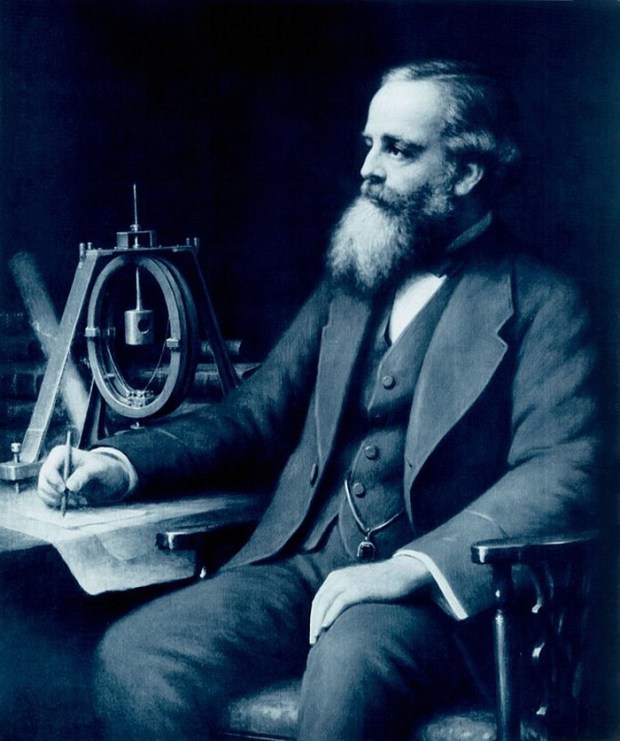
As Maxwell explored the consequences of his new theory, he found that changing magnetic fields can lead to changing electric fields, which then lead to a new round of changing magnetic fields. The fields leapfrog over each other and can even travel through empty space. When Maxwell went to calculate the speed of these electromagnetic waves, he was surprised to see the speed of light pop out – the first theoretical calculation of this important number.
What is the most precise measurement of the speed of light?
Because it is defined to be a constant, there’s no need to measure it further. The number we’ve defined is it, with no uncertainty, no error bars. It’s done. But the speed of light is just that – a speed. The number we choose to represent it depends on the units we use: kilometers versus miles, seconds versus hours, and so on. In fact, physicists commonly just set the speed of light to be 1 to make their calculations easier. So instead of trying to measure the speed light travels, physicists turn to more precisely measuring other units, like the length of the meter or the duration of the second. In other words, the defined value of the speed of light is used to establish the length of other units like the meter.
How does light slow down?
Yes, the speed of light is always a constant. But it slows down whenever it travels through a medium like air or water. How does this work? There are a few different ways to present an answer to this question, depending on whether you prefer a particle-like picture or a wave-like picture.
In a particle-like picture, light is made of tiny little bullets called photons. All those photons always travel at the speed of light, but as light passes through a medium those photons get all tangled up, bouncing around among all the molecules of the medium. This slows down the overall propagation of light, because it takes more time for the group of photons to make it through.
In a wave-like picture, light is made of electromagnetic waves. When these waves pass through a medium, they get all the charged particles in motion, which in turn generate new electromagnetic waves of their own. These interfere with the original light, forcing it to slow down as it passes through.
Either way, light always travels at the same speed, but matter can interfere with its travel, making it slow down.
Why is the speed of light important?
The speed of light is important because it’s about way more than, well, the speed of light. In the early 1900’s Einstein realized just how special this speed is. The old physics, dominated by the work of Isaac Newton, said that the universe had a fixed reference frame from which we could measure all motion. This is why Michelson and Morley went looking for changes in the speed, because it should change depending on our point of view. But their experiments showed that the speed was always constant, so what gives?
Einstein decided to take this experiment at face value. He assumed that the speed of light is a true, fundamental constant. No matter where you are, no matter how fast you’re moving, you’ll always see the same speed.
This is wild to think about. If you’re traveling at 99% the speed of light and turn on a flashlight, the beam will race ahead of you at…exactly the speed of light, no more, no less. If you’re coming from the opposite direction, you’ll still also measure the exact same speed.
This constancy forms the basis of Einstein’s special theory of relativity, which tells us that while all motion is relative – different observers won’t always agree on the length of measurements or the duration of events – some things are truly universal, like the speed of light.
Can you go faster than light speed?
Nope. Nothing can. Any particle with zero mass must travel at light speed. But anything with mass (which is most of the universe) cannot. The problem is relativity. The faster you go, the more energy you have. But we know from Einstein’s relativity that energy and mass are the same thing. So the more energy you have, the more mass you have, which makes it harder for you to go even faster. You can get as close as you want to the speed of light, but to actually crack that barrier takes an infinite amount of energy. So don’t even try.
How is the speed at which light travels related to causality?
If you think you can find a cheat to get around the limitations of light speed, then I need to tell you about its role in special relativity. You see, it’s not just about light. It just so happens that light travels at this special speed, and it was the first thing we discovered to travel at this speed. So it could have had another name. Indeed, a better name for this speed might be “the speed of time.”
Related: Is time travel possible? An astrophysicist explains
We live in a universe of causes and effects. All effects are preceded by a cause, and all causes lead to effects. The speed of light limits how quickly causes can lead to effects. Because it’s a maximum speed limit for any motion or interaction, in a given amount of time there’s a limit to what I can influence. If I want to tap you on the shoulder and you’re right next to me, I can do it right away. But if you’re on the other side of the planet, I have to travel there first. The motion of me traveling to you is limited by the speed of light, so that sets how quickly I can tap you on the shoulder – the speed light travels dictates how quickly a single cause can create an effect.
The ability to go faster than light would allow effects to happen before their causes. In essence, time travel into the past would be possible with faster-than-light travel. Since we view time as the unbroken chain of causes and effects going from the past to the future, breaking the speed of light would break causality, which would seriously undermine our sense of the forward motion of time.
Why does light travel at this speed?
No clue. It appears to us as a fundamental constant of nature. We have no theory of physics that explains its existence or why it has the value that it does. We hope that a future understanding of nature will provide this explanation, but right now all investigations are purely theoretical. For now, we just have to take it as a given.

2024 Full Moon calendar: Dates, times, types, and names

Jupiter: Size, distance from the Sun, orbit

Jupiter’s moon Io has likely been active for our solar system’s entire history

While millions watched the eclipse, these Purdue University scientists listened

The best telescopes if you want to spend somewhere from $90 to $11,000

The search is on for extraterrestrial life on worlds like Enceladus

The clever prince Ulugh Beg built — and used — an ingenious observatory in the 15th century

The largest digital camera ever made for astronomy is done

NASA seeks faster, cheaper options to return Mars samples to Earth

Universe Today
Space and astronomy news
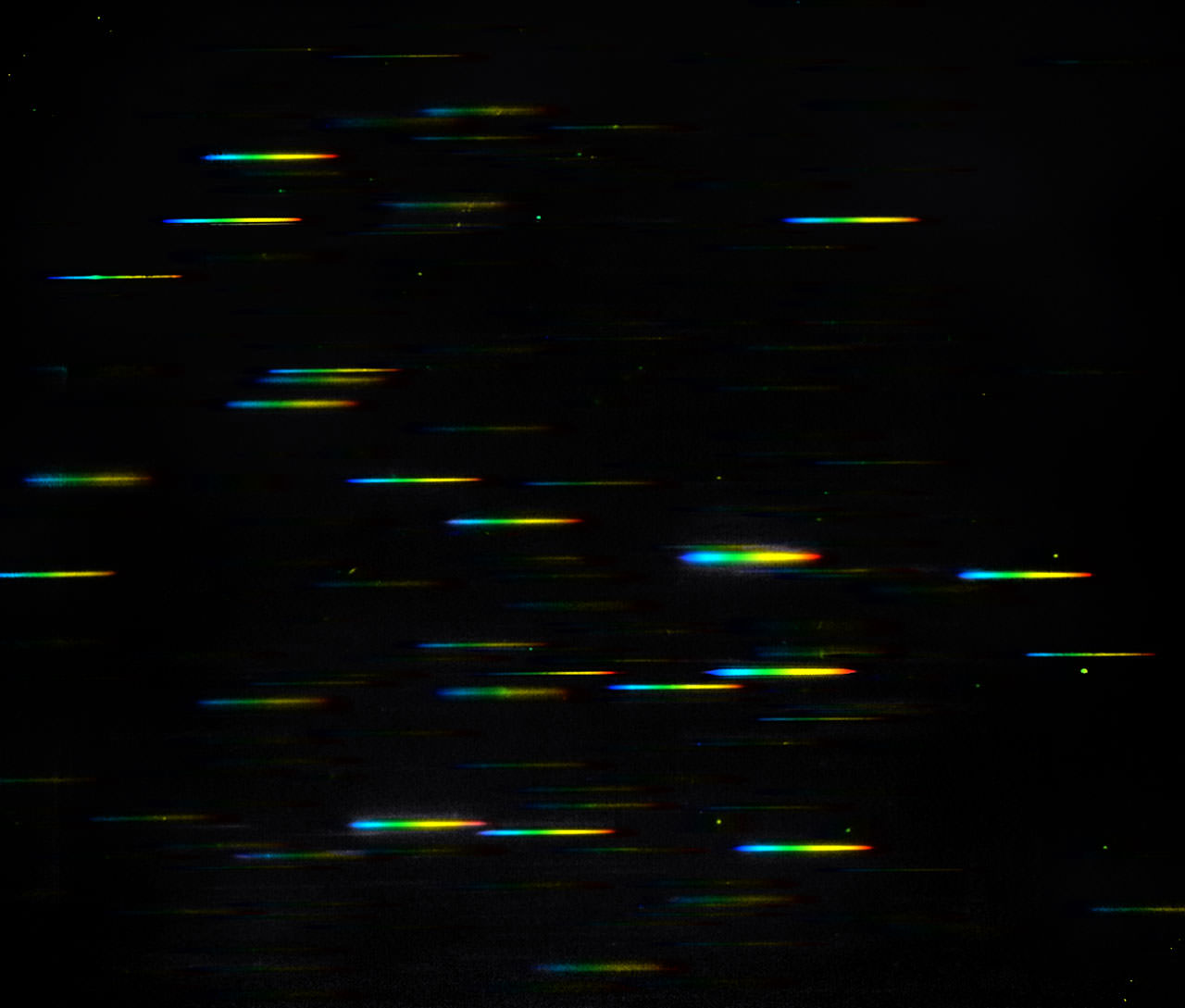
How Does Light Travel?
Ever since Democritus – a Greek philosopher who lived between the 5th and 4th century’s BCE – argued that all of existence was made up of tiny indivisible atoms, scientists have been speculating as to the true nature of light. Whereas scientists ventured back and forth between the notion that light was a particle or a wave until the modern era, the 20th century led to breakthroughs that showed us that it behaves as both.
These included the discovery of the electron, the development of quantum theory, and Einstein’s Theory of Relativity . However, there remains many unanswered questions about light, many of which arise from its dual nature. For instance, how is it that light can be apparently without mass, but still behave as a particle? And how can it behave like a wave and pass through a vacuum, when all other waves require a medium to propagate?
Theory of Light to the 19th Century:
During the Scientific Revolution, scientists began moving away from Aristotelian scientific theories that had been seen as accepted canon for centuries. This included rejecting Aristotle’s theory of light, which viewed it as being a disturbance in the air (one of his four “elements” that composed matter), and embracing the more mechanistic view that light was composed of indivisible atoms.
In many ways, this theory had been previewed by atomists of Classical Antiquity – such as Democritus and Lucretius – both of whom viewed light as a unit of matter given off by the sun. By the 17th century, several scientists emerged who accepted this view, stating that light was made up of discrete particles (or “corpuscles”). This included Pierre Gassendi, a contemporary of René Descartes, Thomas Hobbes, Robert Boyle, and most famously, Sir Isaac Newton .
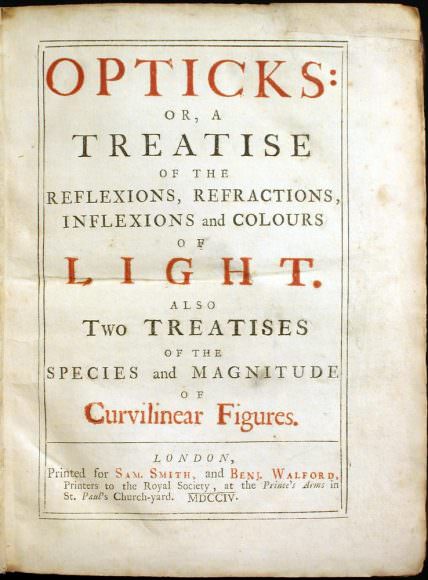
Newton’s corpuscular theory was an elaboration of his view of reality as an interaction of material points through forces. This theory would remain the accepted scientific view for more than 100 years, the principles of which were explained in his 1704 treatise “ Opticks, or, a Treatise of the Reflections, Refractions, Inflections, and Colours of Light “. According to Newton, the principles of light could be summed as follows:
- Every source of light emits large numbers of tiny particles known as corpuscles in a medium surrounding the source.
- These corpuscles are perfectly elastic, rigid, and weightless.
This represented a challenge to “wave theory”, which had been advocated by 17th century Dutch astronomer Christiaan Huygens . . These theories were first communicated in 1678 to the Paris Academy of Sciences and were published in 1690 in his “ Traité de la lumière “ (“ Treatise on Light “). In it, he argued a revised version of Descartes views, in which the speed of light is infinite and propagated by means of spherical waves emitted along the wave front.
Double-Slit Experiment:
By the early 19th century, scientists began to break with corpuscular theory. This was due in part to the fact that corpuscular theory failed to adequately explain the diffraction, interference and polarization of light, but was also because of various experiments that seemed to confirm the still-competing view that light behaved as a wave.
The most famous of these was arguably the Double-Slit Experiment , which was originally conducted by English polymath Thomas Young in 1801 (though Sir Isaac Newton is believed to have conducted something similar in his own time). In Young’s version of the experiment, he used a slip of paper with slits cut into it, and then pointed a light source at them to measure how light passed through it.
According to classical (i.e. Newtonian) particle theory, the results of the experiment should have corresponded to the slits, the impacts on the screen appearing in two vertical lines. Instead, the results showed that the coherent beams of light were interfering, creating a pattern of bright and dark bands on the screen. This contradicted classical particle theory, in which particles do not interfere with each other, but merely collide.
The only possible explanation for this pattern of interference was that the light beams were in fact behaving as waves. Thus, this experiment dispelled the notion that light consisted of corpuscles and played a vital part in the acceptance of the wave theory of light. However subsequent research, involving the discovery of the electron and electromagnetic radiation, would lead to scientists considering yet again that light behaved as a particle too, thus giving rise to wave-particle duality theory.
Electromagnetism and Special Relativity:
Prior to the 19th and 20th centuries, the speed of light had already been determined. The first recorded measurements were performed by Danish astronomer Ole Rømer, who demonstrated in 1676 using light measurements from Jupiter’s moon Io to show that light travels at a finite speed (rather than instantaneously).
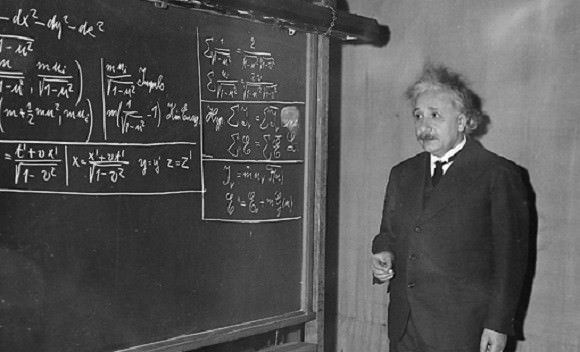
By the late 19th century, James Clerk Maxwell proposed that light was an electromagnetic wave, and devised several equations (known as Maxwell’s equations ) to describe how electric and magnetic fields are generated and altered by each other and by charges and currents. By conducting measurements of different types of radiation (magnetic fields, ultraviolet and infrared radiation), he was able to calculate the speed of light in a vacuum (represented as c ).
In 1905, Albert Einstein published “ On the Electrodynamics of Moving Bodies ”, in which he advanced one of his most famous theories and overturned centuries of accepted notions and orthodoxies. In his paper, he postulated that the speed of light was the same in all inertial reference frames, regardless of the motion of the light source or the position of the observer.
Exploring the consequences of this theory is what led him to propose his theory of Special Relativity , which reconciled Maxwell’s equations for electricity and magnetism with the laws of mechanics, simplified the mathematical calculations, and accorded with the directly observed speed of light and accounted for the observed aberrations. It also demonstrated that the speed of light had relevance outside the context of light and electromagnetism.
For one, it introduced the idea that major changes occur when things move close the speed of light, including the time-space frame of a moving body appearing to slow down and contract in the direction of motion when measured in the frame of the observer. After centuries of increasingly precise measurements, the speed of light was determined to be 299,792,458 m/s in 1975.
Einstein and the Photon:
In 1905, Einstein also helped to resolve a great deal of confusion surrounding the behavior of electromagnetic radiation when he proposed that electrons are emitted from atoms when they absorb energy from light. Known as the photoelectric effect , Einstein based his idea on Planck’s earlier work with “black bodies” – materials that absorb electromagnetic energy instead of reflecting it (i.e. white bodies).
At the time, Einstein’s photoelectric effect was attempt to explain the “black body problem”, in which a black body emits electromagnetic radiation due to the object’s heat. This was a persistent problem in the world of physics, arising from the discovery of the electron, which had only happened eight years previous (thanks to British physicists led by J.J. Thompson and experiments using cathode ray tubes ).
At the time, scientists still believed that electromagnetic energy behaved as a wave, and were therefore hoping to be able to explain it in terms of classical physics. Einstein’s explanation represented a break with this, asserting that electromagnetic radiation behaved in ways that were consistent with a particle – a quantized form of light which he named “photons”. For this discovery, Einstein was awarded the Nobel Prize in 1921.
Wave-Particle Duality:
Subsequent theories on the behavior of light would further refine this idea, which included French physicist Louis-Victor de Broglie calculating the wavelength at which light functioned. This was followed by Heisenberg’s “uncertainty principle” (which stated that measuring the position of a photon accurately would disturb measurements of it momentum and vice versa), and Schrödinger’s paradox that claimed that all particles have a “wave function”.
In accordance with quantum mechanical explanation, Schrodinger proposed that all the information about a particle (in this case, a photon) is encoded in its wave function , a complex-valued function roughly analogous to the amplitude of a wave at each point in space. At some location, the measurement of the wave function will randomly “collapse”, or rather “decohere”, to a sharply peaked function. This was illustrated in Schrödinger famous paradox involving a closed box, a cat, and a vial of poison (known as the “ Schrödinger Cat” paradox).
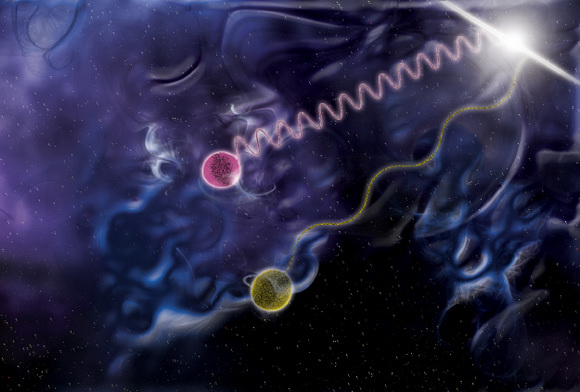
According to his theory, wave function also evolves according to a differential equation (aka. the Schrödinger equation ). For particles with mass, this equation has solutions; but for particles with no mass, no solution existed. Further experiments involving the Double-Slit Experiment confirmed the dual nature of photons. where measuring devices were incorporated to observe the photons as they passed through the slits.
When this was done, the photons appeared in the form of particles and their impacts on the screen corresponded to the slits – tiny particle-sized spots distributed in straight vertical lines. By placing an observation device in place, the wave function of the photons collapsed and the light behaved as classical particles once more. As predicted by Schrödinger, this could only be resolved by claiming that light has a wave function, and that observing it causes the range of behavioral possibilities to collapse to the point where its behavior becomes predictable.
The development of Quantum Field Theory (QFT) was devised in the following decades to resolve much of the ambiguity around wave-particle duality. And in time, this theory was shown to apply to other particles and fundamental forces of interaction (such as weak and strong nuclear forces). Today, photons are part of the Standard Model of particle physics, where they are classified as boson – a class of subatomic particles that are force carriers and have no mass.
So how does light travel? Basically, traveling at incredible speeds (299 792 458 m/s) and at different wavelengths, depending on its energy. It also behaves as both a wave and a particle, able to propagate through mediums (like air and water) as well as space. It has no mass, but can still be absorbed, reflected, or refracted if it comes in contact with a medium. And in the end, the only thing that can truly divert it, or arrest it, is gravity (i.e. a black hole).
What we have learned about light and electromagnetism has been intrinsic to the revolution which took place in physics in the early 20th century, a revolution that we have been grappling with ever since. Thanks to the efforts of scientists like Maxwell, Planck, Einstein, Heisenberg and Schrodinger, we have learned much, but still have much to learn.
For instance, its interaction with gravity (along with weak and strong nuclear forces) remains a mystery. Unlocking this, and thus discovering a Theory of Everything (ToE) is something astronomers and physicists look forward to. Someday, we just might have it all figured out!
We have written many articles about light here at Universe Today. For example, here’s How Fast is the Speed of Light? , How Far is a Light Year? , What is Einstein’s Theory of Relativity?
If you’d like more info on light, check out these articles from The Physics Hypertextbook and NASA’s Mission Science page.
We’ve also recorded an entire episode of Astronomy Cast all about Interstellar Travel. Listen here, Episode 145: Interstellar Travel .
Share this:
- Click to share on Facebook (Opens in new window)
- Click to share on Twitter (Opens in new window)
- Click to share on Reddit (Opens in new window)
56 Replies to “How Does Light Travel?”
“HOW DOES LIGHT TRAVEL?”
it travels lightly. 😀
Light doesn’t exist. This is an observation from light’s point of view and not ours. Traveling at the speed of (wait for it) light, absolutely no time passes between leaving it’s source and reaching it’s destination for the photon. This means, to the photon hitting your retina, it is also still on that star you are observing 10 light years away. How is this possible? Maybe John Wheeler was right when he told Richard Feynman that there is only one electron in the universe and it travels forward in time as an electron, then back in time as a positron and every electron we see is the same electron.
MY QUESTION IS: Whether light is a wave , particle or both.. where does it get the energy to move through space/time. In other words is the energy of light infinite? Does it continue on without lose of energy…..forever…….
I believe that Special Relativity says that the energy of light is infinite due to the very fact it has no mass. E=MC^2
In reverse, this is also why something with mass to begin with. If accelerated toward the speed of light, will see their mass and gravity increase to infinite points as they near relativistic speed (it actually starts around 95% with a steep upward curve from there), with a relative slowing to a stop of time.
Join the discussion
Light and the universe are only illusions that are formed in our minds via technology that sends information from the simulation program we’re living in. That information comes in the form of invisible wavelengths that includes wavelengths that we perceive as light. The visible retinas in our eyes are like tiny video screens where these particles are arranged into patterns that form into all the various objects we think are real objects. This information is also converted into thoughts within our minds which are like computer processors that process that information.
We are living in a computer simulation that is much more advanced than anything the characters in the program have built according to the information called the Beast.
Brad,…So You’re suggesting that “life” as we know and call it “is some kind of retro-virus” or “bio-intelligent format” heaped upon a perceived “set of accepted data sets” that are not in sync with each other in most cases with exception to Math 94% of the time….Even then it can vary which suggests Your idea would mean we all live in a fairy tale. That is what you suggest,…right?……
Brad has watched the Matrix too many times.
Correction: Even gravity doesn’t slow light down. Light (EM radiation of any wavelength) always travels at speed c, relative to any local inertial (Lorentz) frame. It could also be noted that the wavelength of an EM wave is not a characteristic of that wave alone; it also depends on the state of motion of the observer. You might even say, “One man’s radio wave is another man’s gamma ray.”
Light actually “slows down” every time it has to travel through anything but a vacuum. Look up Cherenkov radiation to see what happens when light initially travels faster than it can through a particular substance, like water. Light speed is not constant when traveling through any medium except pure vacuum. In fact that is why your pencil looks bent when you drop it in a glass of water. Light bends to find it’s fastest path through any medium, and it slows down in that medium.
if all you scientist could ever get it in your pie brain that there is no time, no light speed, no warping space, no black holes for the purpose of moving through space quickly, no smallest no biggest when it comes to space and that all of everything has always been in existence but not necessarily as it is now. you will never find the smallest because if it exist it has an inside, and you will never find the end of space because it is infinite.
What are you smoking?
The article started out nicely, but I lost interest as mistakes began to appear. First Einstein did not “propose” the photoelectric effect. The photoelectric effect was first observed by Heinrich Hertz in 1887. Einstein used the idea of photons to explain the photoelectric effect and derive the photoelectric equation. Also, Max Plank had already derived the blackbody distribution, by assuming that electromagnetic energy of frequency f could only be emitted in multiples of energy E=hf, by 1900. Einstein’s paper on the photoelectric effect was published in his “miracle” year of 1905. The photoelectric effect has nothing to do with black body radiation.
Einstein did not coin the name “photons” for light quanta, as stated in this article. This term was first used by Arthur Compton in 1928.
I have to say that I do not know what the author of the article means when he says ” calculating the wavelength at which light functioned” in reference to Louis-Victor de Broglie. Louis de Broglie used the dual nature of light to suggest that electrons, previously thought of as particles, also had wave characteristics and used this notion to explain the Bohr orbits in the hydrogen atom.
I gave up on the article after seeing these errors. I’m afraid I have a low tolerance for sloppy writing.
Oh, it’s BCE now, “Before the Common Era” BC has worked for 2000 years but now the PC police have stepped in so as not to offend who? Some Muslims?
mecheng1, you must be very young. BCE has been in used in academia for decades. It’s nothing “new”, just out of your circle of knowledge.
Decades??? Really?? How does that compare to 2000 years?
Only in Euro-centric texts have your assertions been true, McCowen. The rest of the world not influenced by Christianity have used their own calendars and a “0” year or a “year 1” from which to reckon the passage of time, largely based on their own religions or celestial observations.
Over the last century or so, through commerce, most of the world has generally accepted the use of a Western calendar (or use it along with their own for domestic purposes, like we here in the US still use Imperial units of measure that have to be converted to metric for international commerce). So, we are in a “common era” insofar as non-Christian societies are incorporating the Gregorian Calendar and the generally-accepted “year 1” established by that calendar (which is supposed to be the year of Jesus’s birth, but it probably isn’t according to current scholarship). Besides, the Gregorian calendar is an improved derivative of the Roman calendar – even the names of the months come from the Romans.
In short, it is more accurate, as well as respectful, to go with BCE in these global times.
Where is the information carried on a photon hitting my eye(s), or cluster/group/pack of photons hitting my eyes(s), that I see as other distant galaxies and planets going around stars?
That’s the mystery, isn’t it? Even in scattering, light remains coherent enough to convey an enormous amount of information.
Since the miniscule equal masses with opposite charges, that make up the photon structure, interact at 90 degrees, this induces a spin (a finding from the 80’s by the LANL plasma physics program) which creates a centrifugal force that counterbalances the charge attraction of the opposite charges. This establishes a stable structure for energies less than 1.0216 MeV, the pair-formation threshold, separating these “neutrino” sub-components by a specific distance providing wavelengths varying with photon energy. This composite photon propagates transversely at c/n, the speed of light divided by the index of refraction of the material traversed. In spite of the mass being defined as zero, for convenience in calculating atomic masses, there is actually an infinitesimal but non-zero mass for the photon that is required for calculations that describe its properties.
Tim, you poor guy! You have a discombobulated brain! Everything you wrote is just gibberish.
i would like to know the temperature in a black hole…maybe absolute zero? is absolute zero the moment that time stop?
I think the temp inside a black hole would be extremely high since temperature seems to increase with mass. Comparing absolute zero to time stopping is very interesting though. To the observer they would appear the same.
Theoretically there is no temperature in a black hole from any observer POV because time is stopped. Although JALNIN does bring up that point, and he also brings up the point of increasing mass corresponding to increasing energy. Everything in Hawking and Einstein’s equations though, suggest that any energy would be absorbed back by the singularity, so there wouldn’t be any heat. In fact it should be infinitely cold. But time is no more, so technically no heat or energy is emitted anyway from any observers POV. Yet recent images of black holes from Chandra show that they emit powerful Gamma Jets along their spin axis just like Neutron stars, and Pulsars. BTW edison. The accretion disk can reach temperatures of 20MN Kelvin on a feeding SM black hole (quasar). NASA just published an article on it through the Chandra feed a while back.
Light doesn’t travel, it just IS. It is we, the condensed matter, that travels, through time.
Oh really? Is this just your imagination/illusion or you have published a paper on it?
So you don’t believe you travel through time?
I wish I understood just a portion of I just read, love sicence so bad BUT, sighs
It would be easier to understand if it wasn’t pure gibberish written by someone with no science background.
I have two “mind-bending relativity side effects” to share. At least they are mind-bending to me.
1) Light travels the same speed relative to all particles of mass, regardless of how those particles move relative to each other:
I can conceptualize this if we are only talking about two mass-particles/observers and the examples I’ve seen always involve only two observers. But if you have many mass-particles/observers, how does the space-time seem to know to adjust differently for all of them. I am sure i am understanding this correctly as it is a basic concept of special relativity and nobody seems to bring this issue up. But it “bends my mind” when i try to include more than two observers. Maybe you can help.
2) General Relativity’s (“GR”) prediction that the big bang started with “Infinite” energy and now the universe appears to have finite mass energy and Regarding the first effect: How can something infinite turn into something finite? Is the answer that at that early in the universe, quantum takes over and GR’s prediction of infinite mass-energy at the start of the universe is just wrong?
I need to correct a typo in my previous comment. Where i say “i am sure am understanding this correctly” I meant to include the word NOT. so it should read “i am sure am NOT understanding this correctly” Mark L.
Mark,….I think you’re understanding it just fine from the standpoint of multiple observers, The point might be that in space, the density of “emptiness” or “lack of emptiness” might be impacted from one area of observation to another by an observer who’s perceptions are not equal but not being taken into consideration by each observer. ( an example if I may?) If you were to use a Clear medium which is oil based beginning with 5 gallons of mineral spirits in a large barrel and keep adding 5 gallons of thicker clear oil and then heavy grease and stop with using a clear heavy wax,…what happens is you end up with a barrel of clear fluid that begins with a floating substrate but the liquid begins to keep floating and the heaviest stuff goes to the bottom,…You end up with a sort of solid tube of clear fluids which if you could keep them in shape here on the earth, “you could observe them” from several positions, #1. the fluid end #2, the less fluid part, #3, the semi solid part #4. the seemingly solid part #5. the almost solid part & #6. the solid part……all of which would be transparent….You could then shine a laser through all of it and perhaps do that again from different places and see what happens at different angles…..I think what happens as a result would be, an observer would end up be influenced as per his or her ideas thusly because of the quasi-nature of what the density of space is at the point of space is where the observation is made. just a guess.
All Special Relativity really says about light is that it appears to move at the same rate from any observer POV. There are other more advanced rules relating to light speeds. One of them is the implication of infinite energy in a photon because of the fact it’s mass-less, therefore it can move at the maximum rate a mass-less particle or wave can (not necessarily that it does) Later when the electron was discovered (also mass-less particle or wave), it was also found to conform to the rules of special relativity.
As far as the big bang, there are a lot of cracks in that theory, and many different ones are beginning to dispute some of the common ideas behind the “Big Bang” as well as “Inflationary Cosmology”. Honestly though, both standard and quantum physics applied, and yet both went out the window at the same time at some point. That’s what all the theories really say. At some point, everything we know or think we know was bunk, because the math just breaks down, and doesn’t work right anymore.
i think until there is an understanding of the actual “fabric” of space itself, the wave vs particle confusion will continue. another interesting article recently was the half integer values of rotating light. planck’s constant was broken? gravity? a bump in the data? lol these are interesting times.
There’s no fabric.
Tesla insists there is an aether, Einstein says not. Tesla enjoyed far less trial and error than Einstein. The vast majority of Tesla’s projects worked the first time around and required no development or experimentation. I’ll go with Tesla; there is an aether as a fabric of space.
http://weinsteinsletter.weebly.com/aether.html
Maybe Special Relativity is not correct? 🙂
Feynman said unequivocally that QED is NOT a wave theory. In fact, the math only looks like Maxwell’s wave function when you are looking at a single particle at a time, but the analogy breaks down as soon as you start looking at the interactions of more than one, which is the real case. There’s no light acting alone, but always an interaction between a photon and some other particle, an electron, another photon, or whatever. He said “light is particles.” So the question re: how can light travel through a vacuum if it’s waves is a nonsensical question. There are no collapsing wave functions in light. There’s only probabilities of position that look like waves on a freaking piece of paper. Even calling light properties as “wavelengths” is nonsensical. Light comes in frequencies, i.e., the number of particles traveling tightly together. Higher frequency is more energy because it’s more particles (E=MC[squared]). “Wavicles” is pure bullshit.
I don’t agree with the John Wheeler theory that there is only one electron since the computer I am using was built by ion implantation and uses a very large number of them simultaneously to function.
Black holes don’t stop or slow light, if they even exist. A black hole could phase shift light, which is why we see things emitting xrays and call them black holes….but they could be something else too.
Photons have no mass but they do have energy. Energy and mass are transformable into each other. Gravity works on energy as well as mass. As massive particles approach the speed of light their measurable mass increases to infinity. But since energy is equivalent to mass, why doesn’t the photon, which has energy, not seem to have infinite mass?
NO other wave travels thru a vacuum? what about radio?
Radio waves are a specific frequency range of light.
Technically speaking, radio waves are emitted at various frequencies that share the same space time as light. They are not however light. They’re modulated electrons. Modulated photons certainly can be used to carry a vast amount of information a great distance. It cannot do it any faster or better than a radio wave though. Both electrons and photons are mass-less, therefore they both conform to the rules of Special Relativity in the same way. Both travel at the speed of light.
I just don’t understand is it a particle of a wave? It seems like it behaves like wave and sometimes like particle and in some situations is like a what ever you are going to call it.
So, the logical idea would to have formula Photon_influence * weight_for_particle + Wave_influence * weight_for_wave
Make it more compact.
This article is good but the title is bad as by the end we still weren’t told how light travels through space. Also, there are some historical mistakes as already pointed out. Now for my contribution: I think that light and Gravity have a lot in common; for one – an atom’s electrons transmit light and an atom contains the tiny heavy place that knows everything there is to know about gravity, that is, the nucleus. Light and Gravity are both related to the same entity, the atom. Unfortunately, we, still cannot grasp how what’s heavy brings about gravitation. For those of you with a creed for new ideas go to: https://www.academia.edu/10785615/Gravity_is_emergent It’s a hypothesis…
Gravity and light are infinite, like space and time… Mind the concept that there are waves within waves, motions within motion, vibrations within vibration, endless overtones and universal harmony…
From this article, I have “And in the end, the only thing that can truly slow down or arrest the speed of light is gravity”
Doesn’t light slow down in water and glass and other mediums. I was only a Physics minor, but I do remember coivering this though way back in the early 80’s. And in my quick checking online, I found the following.
“Light travels at approximately 300,000 kilometers per second in a vacuum, which has a refractive index of 1.0, but it slows down to 225,000 kilometers per second in water (refractive index = 1.3; see Figure 1) and 200,000 kilometers per second in glass (refractive index of 1.5).”
Were they saying something else here. I did like the article.
Photons are not massless, but their mass is incredibly small even compared to a proton or neutron. So, by Einstein’s E=MC^2, the energy required for a photon to move is greatly reduced, but photons do have mass and are affected by gravity. If photons had no mass at all, then gravity would have no affect on them, but gravity does. Gravity bends light and can change it’s course through space. We see that in the actual test first performed to prove Einstein’s theory buy observing the distorted placement of stars as their light passes near the sun observed during an eclipse. We can also see it through gravitational lensing when viewing deeps space objects. And the fact that there are black holes that are black because light cannot escape it’s gravity. So photons do have mass, be it miniscule, and with that their propagation with light waves through space will eventually run out of energy and stop. but this would probably require distances greater to several widths of our universe to accomplish. Light from the furthest reaches of the universe are not as bright, or as energetic, as they are at anyplace between here and their origins. That reduction in their energy is also attributed to Einstein’s equation and the inverse square law, where the intensity of light is in relation to the inverse square of the distance. That proves that light looses energy the further it travels, but it still moves at the speed of light. As light looses energy, it doesn’t slow the light wave.
It has been proven that more energetic light does in fact travel slightly faster. You can find the experiments done with light that has traveled billions of light years, the more energetic is in fact faster over a number of seconds, around 10 -15 or so. As people encounter this information, they see that many accepted theories can now be debunked.
The point of the article is nothing new; light acts like a particle AND a beam. So when you sit behind a closed door and someone shines a light on the door, the light will engulf the door and wave through and around the edges, the particle does not just bounce straight back. You can focus a beam of light on an object, but it will sneak though the corners and underneath the door, through any opening,. And yes, light travels forever. It is a constant, that cannot be sped up. We can slow it down by focusing it through prisims or crystals. But it still is traveling at 186,000/MPS.and that speed does not change. So, that is why we can see the outer edge of the universe: 13,8B light years away *the time that it takes for light to travel in one year, is one light year. So, it has taken 13,8B light years for the light of other galaxies to get here, so those galaxies could be gone by now, since it took so long to reach us, We are truly looking back in time as we see the light emitted from those galaxies and stars.
It propagates through the quantum mish-mash know as the aether . . .
If light is a particle and particles have mass why does not the mas increase with it speed?
Wow…there are errors in the article, yes…the enthusiasm demonstrated by all the comments is encouraging…but when I read these comments, I am a bit dismayed at the lack of understanding that is evident in most of them…confusing energy and intensity and wavelength…confusing rest mass and inertial mass…not to mention some off-the-wall hypotheses with no experimental evidence to support them. There are some great primers out there…books, documentaries, podcasts (like Astronomy Cast). Good luck!
Precisely correct. Sci-fi rules basic physics, which reflects on the poor education system. Pity.
First time I heard about A. A. and his theory about light I really didn’t like him. Why? Because light was the the fastest thing in the universe and there is no other thing faster than the light. Later, when I have red about angular speed I have asked my self if you have linear and angular speed and both of them are speeds how that will result in the maximum speed. Since then, I have not had a chance to get right answer.
Comments are closed.
Sciencing_Icons_Science SCIENCE
Sciencing_icons_biology biology, sciencing_icons_cells cells, sciencing_icons_molecular molecular, sciencing_icons_microorganisms microorganisms, sciencing_icons_genetics genetics, sciencing_icons_human body human body, sciencing_icons_ecology ecology, sciencing_icons_chemistry chemistry, sciencing_icons_atomic & molecular structure atomic & molecular structure, sciencing_icons_bonds bonds, sciencing_icons_reactions reactions, sciencing_icons_stoichiometry stoichiometry, sciencing_icons_solutions solutions, sciencing_icons_acids & bases acids & bases, sciencing_icons_thermodynamics thermodynamics, sciencing_icons_organic chemistry organic chemistry, sciencing_icons_physics physics, sciencing_icons_fundamentals-physics fundamentals, sciencing_icons_electronics electronics, sciencing_icons_waves waves, sciencing_icons_energy energy, sciencing_icons_fluid fluid, sciencing_icons_astronomy astronomy, sciencing_icons_geology geology, sciencing_icons_fundamentals-geology fundamentals, sciencing_icons_minerals & rocks minerals & rocks, sciencing_icons_earth scructure earth structure, sciencing_icons_fossils fossils, sciencing_icons_natural disasters natural disasters, sciencing_icons_nature nature, sciencing_icons_ecosystems ecosystems, sciencing_icons_environment environment, sciencing_icons_insects insects, sciencing_icons_plants & mushrooms plants & mushrooms, sciencing_icons_animals animals, sciencing_icons_math math, sciencing_icons_arithmetic arithmetic, sciencing_icons_addition & subtraction addition & subtraction, sciencing_icons_multiplication & division multiplication & division, sciencing_icons_decimals decimals, sciencing_icons_fractions fractions, sciencing_icons_conversions conversions, sciencing_icons_algebra algebra, sciencing_icons_working with units working with units, sciencing_icons_equations & expressions equations & expressions, sciencing_icons_ratios & proportions ratios & proportions, sciencing_icons_inequalities inequalities, sciencing_icons_exponents & logarithms exponents & logarithms, sciencing_icons_factorization factorization, sciencing_icons_functions functions, sciencing_icons_linear equations linear equations, sciencing_icons_graphs graphs, sciencing_icons_quadratics quadratics, sciencing_icons_polynomials polynomials, sciencing_icons_geometry geometry, sciencing_icons_fundamentals-geometry fundamentals, sciencing_icons_cartesian cartesian, sciencing_icons_circles circles, sciencing_icons_solids solids, sciencing_icons_trigonometry trigonometry, sciencing_icons_probability-statistics probability & statistics, sciencing_icons_mean-median-mode mean/median/mode, sciencing_icons_independent-dependent variables independent/dependent variables, sciencing_icons_deviation deviation, sciencing_icons_correlation correlation, sciencing_icons_sampling sampling, sciencing_icons_distributions distributions, sciencing_icons_probability probability, sciencing_icons_calculus calculus, sciencing_icons_differentiation-integration differentiation/integration, sciencing_icons_application application, sciencing_icons_projects projects, sciencing_icons_news news.
- Share Tweet Email Print
- Home ⋅
- Science ⋅
- Physics ⋅
- Sound & Light (Physics): How are They Different?
How Does Light Travel?
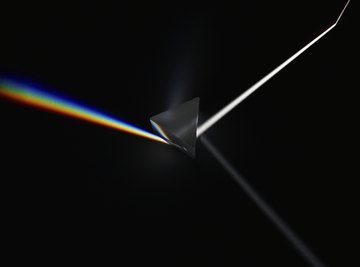
Sound & Light (Physics): How are They Different?
The question of how light travels through space is one of the perennial mysteries of physics. In modern explanations, it is a wave phenomenon that doesn't need a medium through which to propagate. According to quantum theory, it also behaves as a collection of particles under certain circumstances. For most macroscopic purposes, though, its behavior can be described by treating it as a wave and applying the principles of wave mechanics to describe its motion.
Electromagnetic Vibrations
In the mid 1800s, Scottish physicist James Clerk Maxwell established that light is a form of electromagnetic energy that travels in waves. The question of how it manages to do so in the absence of a medium is explained by the nature of electromagnetic vibrations. When a charged particle vibrates, it produces an electrical vibration that automatically induces a magnetic one -- physicists often visualize these vibrations occurring in perpendicular planes. The paired oscillations propagate outward from the source; no medium, except for the electromagnetic field that permeates the universe, is required to conduct them.
A Ray of Light
When an electromagnetic source generates light, the light travels outward as a series of concentric spheres spaced in accordance with the vibration of the source. Light always takes the shortest path between a source and destination. A line drawn from the source to the destination, perpendicular to the wave-fronts, is called a ray. Far from the source, spherical wave fronts degenerate into a series of parallel lines moving in the direction of the ray. Their spacing defines the wavelength of the light, and the number of such lines that pass a given point in a given unit of time defines the frequency.
The Speed of Light
The frequency with which a light source vibrates determines the frequency -- and wavelength -- of the resultant radiation. This directly affects the energy of the wave packet -- or burst of waves moving as a unit -- according to a relationship established by physicist Max Planck in the early 1900s. If the light is visible, the frequency of vibration determines color. The speed of light is unaffected by vibrational frequency, however. In a vacuum, it is always 299,792 kilometers per second (186, 282 miles per second), a value denoted by the letter "c." According to Einstein's Theory of Relativity, nothing in the universe travels faster than this.
Refraction and Rainbows
Light travels slower in a medium than it does in a vacuum, and the speed is proportional to the density of the medium. This speed variation causes light to bend at the interface of two media -- a phenomenon called refraction. The angle at which it bends depends on the densities of the two media and the wavelength of the incident light. When light incident on a transparent medium is composed of wave fronts of different wavelengths, each wave front bends at a different angle, and the result is a rainbow.
Related Articles
What is the formula for velocity of a wave, the famous physicist who discovered photons, how to convert hertz to nanometers, what happens to a white light when it passes through..., how does light travel from the sun to earth, why is the discovery of gravitational waves important, what is light measured in, what causes the dispersion of white light, how to convert photons to joules, how to calculate a wavenumber, how to calculate frequency in hertz, how to find resonant frequencies, what affects the angle of refraction of light, how to calculate oscillation frequency, what is the difference between radio waves & cell phone....
- Boundless.com: Planck's Quantum Theory
About the Author
Chris Deziel holds a Bachelor's degree in physics and a Master's degree in Humanities, He has taught science, math and English at the university level, both in his native Canada and in Japan. He began writing online in 2010, offering information in scientific, cultural and practical topics. His writing covers science, math and home improvement and design, as well as religion and the oriental healing arts.
Photo Credits
Marcochow/iStock/Getty Images
Find Your Next Great Science Fair Project! GO
What is the speed of light?
Light is faster than anything else in the known universe, though its speed can change depending on what it's passing through.

The universe has a speed limit, and it's the speed of light. Nothing can travel faster than light — not even our best spacecraft — according to the laws of physics.
So, what is the speed of light?
Light moves at an incredible 186,000 miles per second (300,000 kilometers per second), equivalent to almost 700 million mph (more than 1 billion km/h). That's fast enough to circumnavigate the globe 7.5 times in one second, while a typical passenger jet would take more than two days to go around once (and that doesn't include stops for fuel or layovers!).
Light moves so fast that, for much of human history, we thought it traveled instantaneously. As early as the late 1600s, though, scientist Ole Roemer was able to measure the speed of light (usually referred to as c ) by using observations of Jupiter's moons, according to Britannica .
Around the turn of the 19th century, physicist James Clerk Maxwell created his theories of electromagnetism . Light is itself made up of electric and magnetic fields, so electromagnetism could describe the behavior and motion of light — including its theoretical speed. That value was 299,788 kilometers per second, with a margin of error of plus or minus 30. In the 1970s, physicists used lasers to measure the speed of light with much greater precision, leaving an error of only 0.001. Nowadays, the speed of light is used to define units of length, so its value is fixed; humans have essentially agreed the speed of light is 299,792.458 kilometers per second, exactly.
Light doesn't always have to go so fast, though. Depending on what it's traveling through — air, water, diamonds, etc. — it can slow down. The official speed of light is measured as if it's traveling in a vacuum, a space with no air or anything to get in the way. You can most clearly see differences in the speed of light in something like a prism, where certain energies of light bend more than others, creating a rainbow.
— How many moons does Earth have ?
— What would happen if the moon were twice as close to Earth?
— If you're on the moon, does the Earth appear to go through phases?
Interestingly, the speed of light is no match for the vast distances of space, which is itself a vacuum. It takes 8 minutes for light from the sun to reach Earth, and a couple years for light from the other closest stars (like Proxima Centauri) to get to our planet. This is why astronomers use the unit light-years — the distance light can travel in one year — to measure vast distances in space.
Sign up for the Live Science daily newsletter now
Get the world’s most fascinating discoveries delivered straight to your inbox.
Because of this universal speed limit, telescopes are essentially time machines . When astronomers look at a star 500 light-years away, they're looking at light from 500 years ago. Light from around 13 billion light-years away (equivalently, 13 billion years ago) shows up as the cosmic microwave background, remnant radiation from the Big Bang in the universe's infancy. The speed of light isn't just a quirk of physics; it has enabled modern astronomy as we know it, and it shapes the way we see the world — literally.

Briley Lewis (she/her) is a freelance science writer and Ph.D. Candidate/NSF Fellow at the University of California, Los Angeles studying Astronomy & Astrophysics. Follow her on Twitter @briles_34 or visit her website www.briley-lewis.com .
Researchers solve mystery of inexplicably dense galaxy at the heart of perfect 'Einstein ring' snapped by James Webb telescope
Gravitational waves reveal 1st-of-its-kind merger between neutron star and mystery object
Packs of dog-shaped robots could one day roam the moon — if they can find their footing on Earth first
- Kooperkieri54 That's correct. In a vacuum, such as outer space, light travels at a constant speed of approximately 299,792 kilometers per second (or about 186,282 miles per second), which is often rounded to 300,000 kilometers per second for simplicity. This speed is commonly referred to as the speed of light in a vacuum and is denoted by the symbol "c". However, when light passes through a medium, such as air, water, or glass, its speed can change. This change in speed is due to the interaction of light with the atoms or molecules in the medium. The speed of light in a medium is typically slower than its speed in a vacuum because the particles in the medium can absorb and re-emit photons, causing a delay in the overall propagation of light. The change in speed of light in different materials is characterized by the refractive index of the material. The refractive index indicates how much the speed of light is reduced when it passes through that particular material compared to its speed in a vacuum. It's worth noting that while light is the fastest known phenomenon in the universe, it is not instantaneous . what pickleball paddles do the prose use. It still takes time for light to travel from one point to another, and its speed is an essential aspect of many fundamental theories and principles in physics. Reply
- marcuso I thought the speed of an event was relative, with all observers having their own space time, therfore how does this fit into 2 observers seeing the same speed of light ? Reply
- View All 2 Comments
Most Popular
- 2 James Webb telescope confirms there is something seriously wrong with our understanding of the universe
- 3 'Exceptional' prosthesis of gold, silver and wool helped 18th-century man live with cleft palate
- 4 NASA spacecraft snaps mysterious 'surfboard' orbiting the moon. What is it?
- 5 AI pinpoints where psychosis originates in the brain
- 2 2,500-year-old skeletons with legs chopped off may be elites who received 'cruel' punishment in ancient China
- 3 Giant, 82-foot lizard fish discovered on UK beach could be largest marine reptile ever found
- 4 The universe may be dominated by particles that break causality and move faster than light, new paper suggests
- 5 Intel unveils largest-ever AI 'neuromorphic computer' that mimics the human brain
Advertisement
How Light Works
- Share Content on Facebook
- Share Content on LinkedIn
- Share Content on Flipboard
- Share Content on Reddit
- Share Content via Email

Light is at once both obvious and mysterious. We are bathed in yellow warmth every day and stave off the darkness with incandescent and fluorescent bulbs . But what exactly is light? We catch glimpses of its nature when a sunbeam angles through a dust-filled room, when a rainbow appears after a storm or when a drinking straw in a glass of water looks disjointed. These glimpses, however, only lead to more questions. Does light travel as a wave, a ray or a stream of particles? Is it a single color or many colors mixed together? Does it have a frequency like sound? And what are some of the common properties of light, such as absorption, reflection, refraction and diffraction?
You might think scientists know all the answers, but light continues to surprise them. Here's an example: We've always taken for granted that light travels faster than anything else in the universe. Then, in 1999, researchers at Harvard University were able to slow a beam of light down to 38 miles an hour (61 kilometers per hour) by passing it through a state of matter known as a Bose-Einstein condensate. That's almost 18 million times slower than normal! No one would have thought such a feat possible just a few years ago, yet this is the capricious way of light. Just when you think you have it figured out, it defies your efforts and seems to change its nature.
Still, we've come a long way in our understanding. Some of the brightest minds in the history of science have focused their powerful intellects on the subject. Albert Einstein tried to imagine what it would be like to ride on a beam of light. "What if one were to run after a ray of light?" he asked. "What if one were riding on the beam? … If one were to run fast enough, would it no longer move at all?"
Einstein, though, is getting ahead of the story. To appreciate how light works, we have to put it in its proper historical context. Our first stop is the ancient world, where some of the earliest scientists and philosophers pondered the true nature of this mysterious substance that stimulates sight and makes things visible.
Please copy/paste the following text to properly cite this HowStuffWorks.com article:
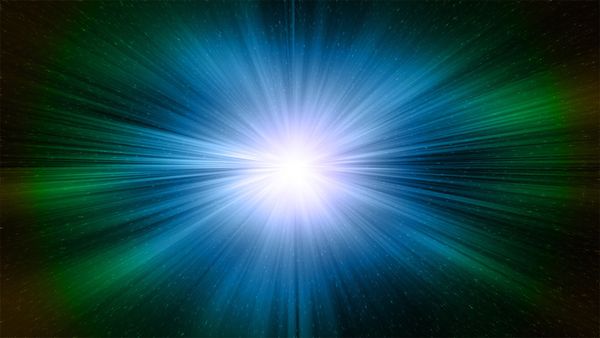

Turn Your Curiosity Into Discovery
Latest facts.
10 Facts About World Wish Day April 29th
11 Facts About National Mimosa Day May 16th
Light facts.
Written by chelsea
Modified & Updated: 10 Oct 2023
Reviewed by Jessica Corbett
- Radiation Facts

- Light is made up of energy.
- Light travels in a straight line. Objects in its path cause light to bend or refract.
- The speed of light is exactly 299 792 km per second.
- This is the speed when light is travelling in a vacuum and not obstructed by the atmosphere.
- Travelling at the speed of light, you could go around Earth 7.5 times in a second.
- There are different types of light and each one has its own wavelength.
- Some animals can see wavelengths that humans cannot. Ultraviolet light (UV light), for example.
- Sunlight can be seen 80 meters underwater.
- Plants are green because they reflect green light while absorbing other colours. The other colours that they absorb are used in photosynthesis to create food.
- A double rainbow occurs when light is reflected twice within each water droplet.
- LED lights are made up entirely of visible (to humans) light. This is why they appear that much brighter.
- Light from the sun takes over 8 minutes to reach earth.
- The speed of light is relevant to the atmosphere that it is travelling through.
- Plato thought that we see by shooting light rays out of our eyes.
- LED lights produce much less heat than iridescent lights.
- Visible light makes up very little of the electromagnetic spectrum. On the spectrum, you will find everything from infrared to gamma rays.
- Birds and lizards can see ultraviolet light. On the other hand, goldfish can see infrared light.
- Light has no mass but it manages to have momentum. Scientists are working on harnessing the energy provided by this momentum of light.
- “Photography” translates to mean “writing with light”.
- The aforementioned term was coined by the son of the man who discovered infrared.
The Right To Light
There is an English law called the ‘Right to Light’. The law dictates that if someone has received natural light in their building for more than 20 years, they are allowed to forbid the construction of buildings that would block this stream of light.
The Light That Never Went Out

A neon lamp was switched on during the Great Depression and continued to burn until it was discovered some 77 years later. The electricity bill came up to a whopping $17 000!
When you say you will be somewhere in a ‘jiffy’, you are referring to an existing unit of measurement. A ‘jiffy’ is the time it takes light to travel one centimeter in a vacuum.
This works out to approximately 33.3564 picoseconds. Additionally, if you were wondering, a picosecond is one-trillionth of a second.
Worse Than The Angler Fish

You might already be familiar with the Angler Fish that hypnotises its prey with a bioluminescent light before devouring it.
However, there is also the less popular Stoplight Loosejaw, who takes advantage of its prey’s disability to see red light. It projects a beam of red bioluminescence to hunt with ease. Talk about an unfair advantage!
Divided By Light
From space, you can see quite clearly the division between East and West Germany . This is since the different regions use different types of lightbulbs. Hence, the type of light produced is noticeably different.
If you find yourself with a tickle in your nose when faced with bright light, you’re experiencing what a significant percentage of people experience. The mildly annoying phenomenon is known as ‘photic sneeze reflex’. It occurs due to crossed wires in the brain, according to neurologists.
Blue Light Calms You Down
In countries such as Japan and Scotland, the streetlights switch to blue at night. This has resulted in lowered cases of crime and suicide. Proof to the theory that blue light has a calming effect on human beings.
Can Humans See Ultraviolet Light?
The reason human beings cannot detect ultraviolet light is that it is filtered out by your eye ’s lens. You can undergo surgery to have this lens removed, should you desperately want to be able to see ultraviolet light rays.
Bioluminescent Trees
Scientist and developers are working on extracting the bioluminescence that occurs naturally in certain jellyfish and fireflies. If they are successful, we could soon have bioluminescent trees that will not require energy.
It Spells Hollywood
The blinking light atop the famed Capitol Records Tower spells out ‘Hollywood’ in morse code. Rather appropriate if you ask us!
A Supersonic Blue Glow
There is a blue glow that is emitted when something travels faster than the speed of light in any given medium. This is likened to the supersonic boom that occurs when things travel at the speed of sound. It is called Cherenkov Radiation.
A Cursed Diamond

There is a diamond called the Hope Diamond that emits an ominous red glow when exposed to UV light. We can’t blame people for therefore believing that the diamond is cursed.
Human Beings Glow
We as humans are bioluminescent, not unlike the jellyfish and fireflies. However, the light we emit is much too weak for our eyes to detect it.
Conductors In Light
There is an element known as Selenium that only conducts electricity when light is shined on it. As one might expect, in the dark, Selenium acts as an insulator.
Flashes In Space

If you happen to find yourself out in space you might notice flashes of light that you wouldn’t here on Earth . This is due to optic rays hitting your optic nerves. The reason we do not experience this on Earth is thanks to the magnetosphere that blocks out these rays.
In Conclusion...
How many of these mind-blowing facts about light did you already know? Do let us know which one you found the most interesting and if we’ve left out any particularly eye-catching facts about light in the comments below!
Was this page helpful?
Our commitment to delivering trustworthy and engaging content is at the heart of what we do. Each fact on our site is contributed by real users like you, bringing a wealth of diverse insights and information. To ensure the highest standards of accuracy and reliability, our dedicated editors meticulously review each submission. This process guarantees that the facts we share are not only fascinating but also credible. Trust in our commitment to quality and authenticity as you explore and learn with us.
Share this Fact:
- Higgs boson
- Dark matter
- Dark energy
- New physics
- Applications
- Full archive
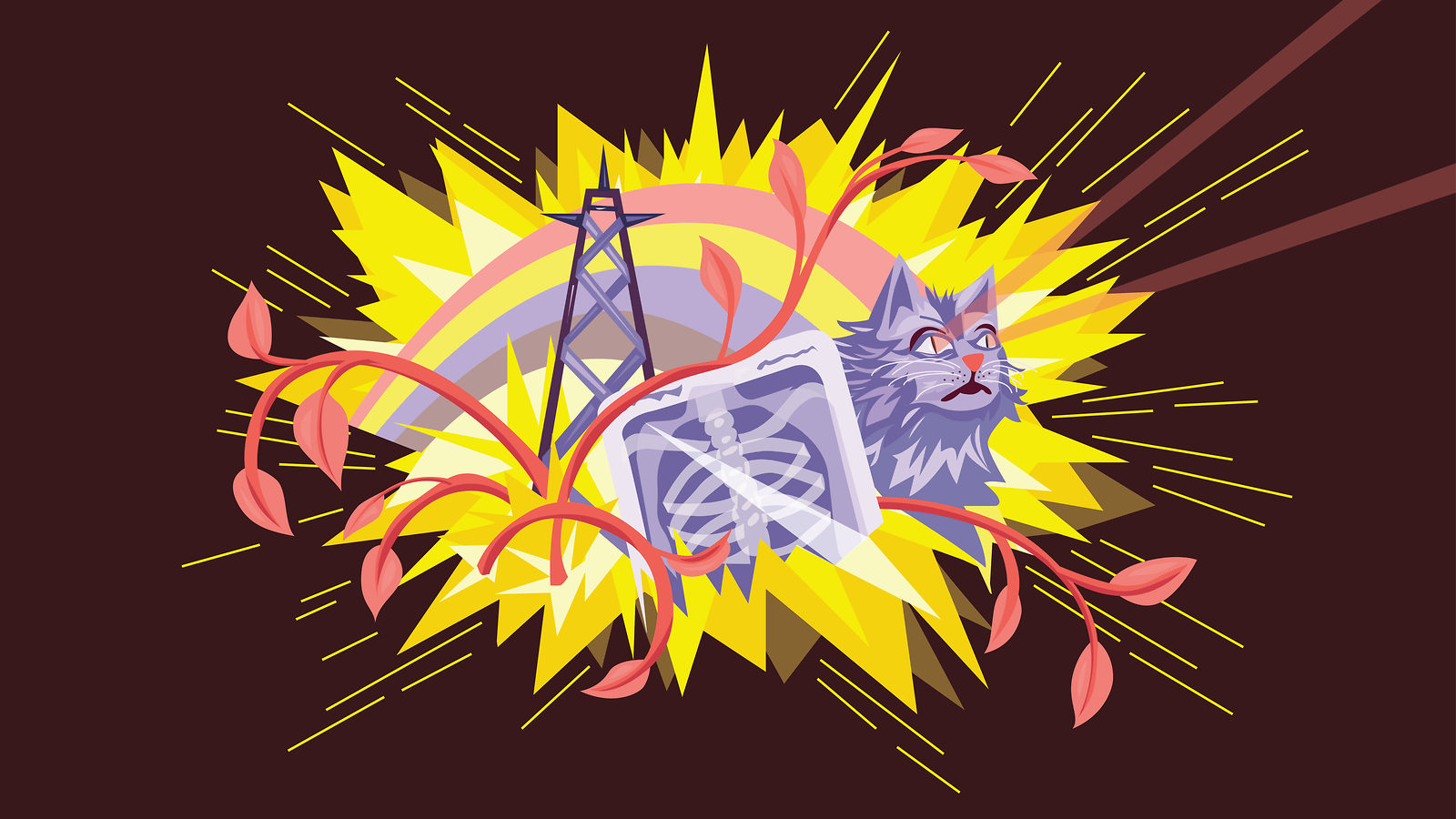
Eight things you might not know about light
Light is all around us, but how much do you really know about the photons speeding past you?
There’s more to light than meets the eye. Here are eight enlightening facts about photons:

1. Photons can produce shock waves in water or air, similar to sonic booms.
Nothing can travel faster than the speed of light in a vacuum. However, light slows down in air, water, glass and other materials as photons interact with atoms, which has some interesting consequences.
The highest-energy gamma rays from space hit Earth’s atmosphere moving faster than the speed of light in air. These photons produce shock waves in the air, much like a sonic boom, but the effect is to make more photons instead of sound. Observatories like VERITAS in Arizona look for those secondary photons, which are known as Cherenkov radiation. Nuclear reactors also exhibit Cherenkov light in the water surrounding the nuclear fuel.

2. Most types of light are invisible to our eyes.
Colors are our brains’ way of interpreting the wavelength of light: how far the light travels before the wave pattern repeats itself. But the colors we see—called “visible” or “optical” light—are only a small sample of the total electromagnetic spectrum.
Red is the longest wavelength light we see, but stretch the waves more and you get infrared, microwaves (including the stuff you cook with) and radio waves. Wavelengths shorter than violet span ultraviolet, X-rays and gamma rays. Wavelength is also a stand-in for energy: The long wavelengths of radio light have low energy, and the short-wavelength gamma rays have the highest energy, a major reason they’re so dangerous to living tissue.
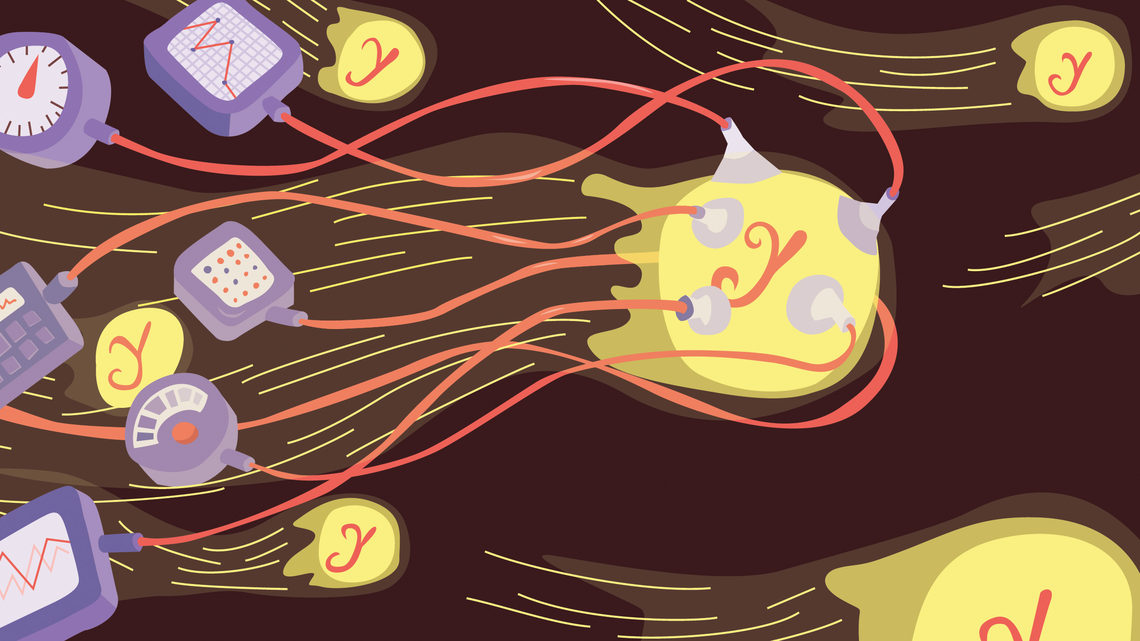
3. Scientists can perform measurements on single photons.
Light is made of particles called photons, bundles of the electromagnetic field that carry a specific amount of energy. With sufficiently sensitive experiments, you can count photons or even perform measurements on a single one. Researchers have even frozen light temporarily.
But don’t think of photons like they are pool balls. They’re also wave-like: they can interfere with each other to produce patterns of light and darkness. The photon model was one of the first triumphs of quantum physics; later work showed that electrons and other particles of matter also have wave-like properties.

4. Photons from particle accelerators are used in chemistry and biology.
Visible light’s wavelengths are larger than atoms and molecules, so we literally can’t see the components of matter. However, the short wavelengths of X-rays and ultraviolet light are suited to showing such small structure. With methods to see these high-energy types of light, scientists get a glimpse of the atomic world.
Particle accelerators can make photons of specific wavelengths by accelerating electrons using magnetic fields; this is called “synchrotron radiation.” Researchers use particle accelerators to make X-rays and ultraviolet light to study the structure of molecules and viruses and even make movies of chemical reactions .
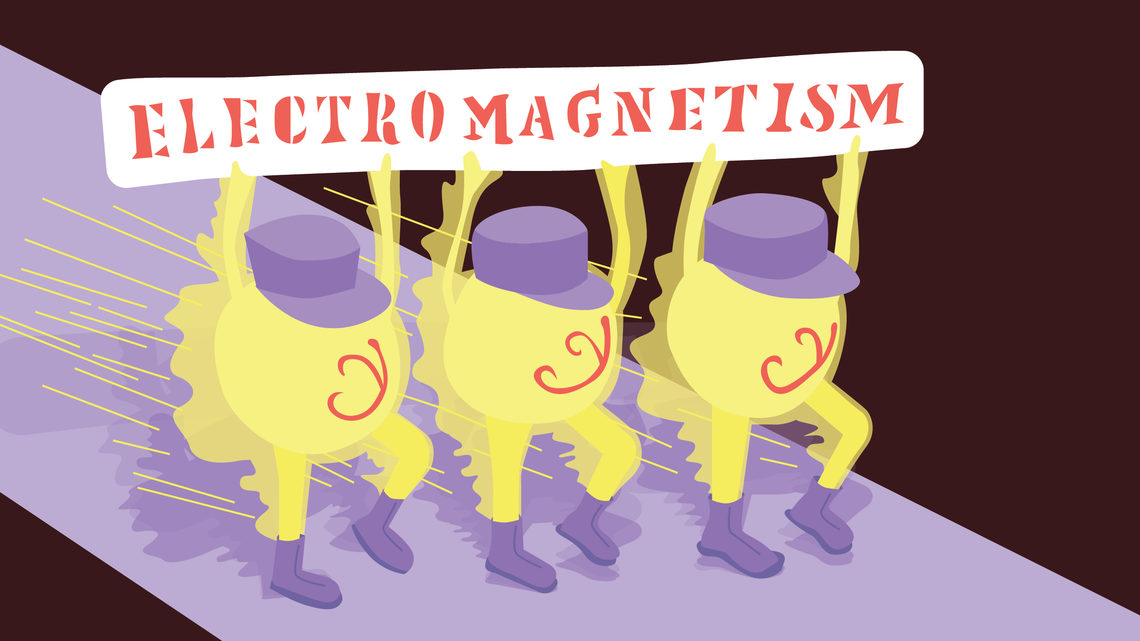
5. Light is the manifestation of one of the four fundamental forces of nature.
Photons carry the electromagnetic force, one of the four fundamental forces (along with the weak force, the strong force, and gravity). As an electron moves through space, other charged particles feel it thanks to electrical attraction or repulsion. Because the effect is limited by the speed of light, other particles actually react to where the electron was rather than where it actually is. Quantum physics explains this by describing empty space as a seething soup of virtual particles. Electrons kick up virtual photons, which travel at the speed of light and hit other particles, exchanging energy and momentum.

6. Photons are easily created and destroyed.
Unlike matter, all sorts of things can make or destroy photons. If you’re reading this on a computer screen, the backlight is making photons that travel to your eye, where they are absorbed—and destroyed.
The movement of electrons is responsible for both the creation and destruction of the photons, and that’s the case for a lot of light production and absorption. An electron moving in a strong magnetic field will generate photons just from its acceleration.
Similarly, when a photon of the right wavelength strikes an atom, it disappears and imparts all its energy to kicking the electron into a new energy level. A new photon is created and emitted when the electron falls back into its original position. The absorption and emission are responsible for the unique spectrum of light each type of atom or molecule has, which is a major way chemists, physicists, and astronomers identify chemical substances.

7. When matter and antimatter annihilate, light is a byproduct.
An electron and a positron have the same mass, but opposite quantum properties such as electric charge. When they meet, those opposites cancel each other, converting the masses of the particles into energy in the form of a pair of gamma ray photons.

8. You can collide photons to make particles.
Photons are their own antiparticles. But here’s the fun bit: the laws of physics governing photons are symmetric in time. That means if we can collide an electron and a positron to get two gamma ray photons, we should be able to collide two photons of the right energy and get an electron-positron pair.
In practice that’s hard to do: successful experiments generally involve other particles than just light . However, inside the LHC, the sheer number of photons produced during collisions of protons means that some of them occasionally hit each other .
Some physicists are thinking about building a photon-photon collider , which would fire beams of photons into a cavity full of other photons to study the particles that come out of collisions.
- Hacker News
popular on symmetry

The deconstructed Standard Model equation
The Standard Model is far more than elementary particles arranged in a table.

Physics vocabulary: AI edition
Don’t know your convolutional neural networks from your boosted decision trees? Symmetry is here to help.

Symmetry’s guide to AI in particle physics and astrophysics
In the coming weeks, Symmetry will explore the ways scientists are using artificial intelligence to advance particle physics and astrophysics—in a series of articles written and illustrated entirely by humans.

What is a photon?
The fundamental particle of light is both ordinary and full of surprises.
Neutron star particles go under the LHC microscope
Researchers on the ALICE experiment are uncovering the properties of elusive hyperon particles hypothesized to be found inside neutron stars.
The unseen progress of the LHC
It’s not always about what you discover.
Five mysteries the Standard Model can’t explain
Our best model of particle physics explains only about 5 percent of the universe.
The big book of physics
Looking for the latest info on particle physics? There’s a book for that.
A strength test for the strong force
New research could tell us about particle interactions in the early universe and even hint at new physics.
Incredible hulking facts about gamma rays
From lightning to the death of electrons, the highest-energy form of light is everywhere.
What is a “particle”?
Quantum physics says everything is made of particles, but what does that actually mean?
Fermilab scientists discover new four-flavor particle
DZero announces the newest member of the tetraquark family.
It’s a wonderful world — and universe — out there.
Come explore with us!
Science News Explores
Let’s learn about light.
The light we see is only one form of this electromagnetic radiation
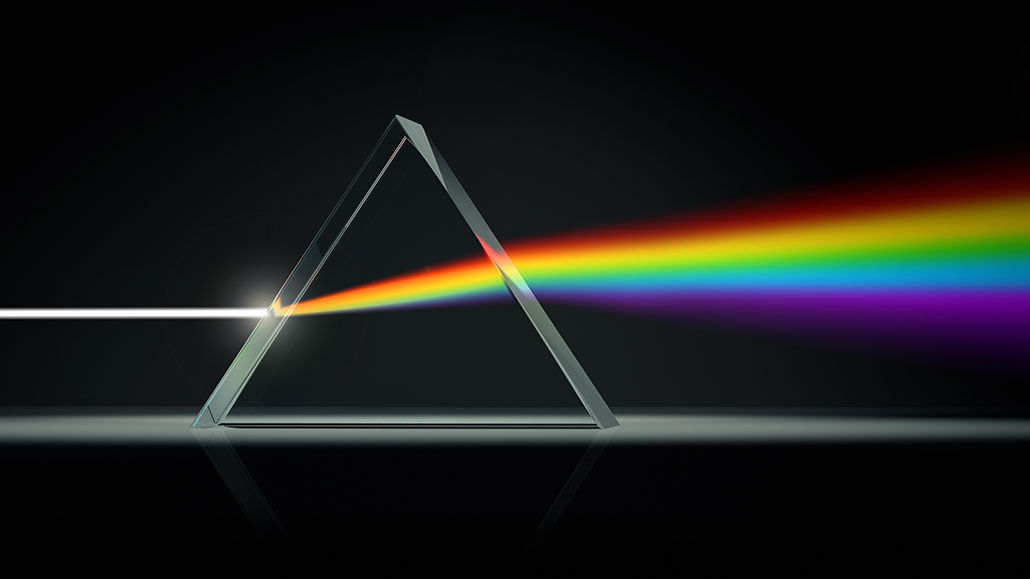
Visible light comes in many wavelengths that appear white when combined. When separated by a prism, those different wavelengths line up according to the length of the waves, from red (longest) to violet (shortest).
artpartner-images/iStock/Getty Images Plus
Share this:
- Google Classroom
By Bethany Brookshire
March 23, 2021 at 6:30 am
In fiction, some superheroes have special vision. In WandaVision , for instance, Monica Rambeau can see energy pulsing from objects all around her. And Superman has X-ray vision and can see through objects. These are definitely super talents, but it’s not that different from what normal humans can do. That’s because we can see also see a type of energy: visible light.
Light’s more formal name is electromagnetic radiation . This type of energy travels as waves, at a constant speed of 300,000,000 meters (186,000 miles) per second in a vacuum. Light can come in many different forms, all determined by its wavelength . This is the distance between the peak of one wave and the peak of another.
The light we can see is called visible light (because we can, er, see it). Longer wavelengths appear as red. Shorter wavelengths look violet. The wavelengths in between fill in all the colors of the rainbow.
But visible light is only a small part of the electromagnetic spectrum. Longer wavelengths just past red are known as infrared light. We can’t see infrared, but we can feel it as heat. Beyond that are microwaves and radio waves. Wavelengths a bit shorter than violet are known as ultraviolet light. Most people can’t see ultraviolet, but animals such as frogs and salamanders can . Even shorter than ultraviolet light is the X-ray radiation used to image inside the body. And still shorter are gamma rays.
Educators and Parents, Sign Up for The Cheat Sheet
Weekly updates to help you use Science News Explores in the learning environment
Thank you for signing up!
There was a problem signing you up.
Want to know more? We’ve got some stories to get you started:
Understanding light and other forms of energy on the move : Radiation doesn’t need to be scary, especially if it allows us to see our family or use our cell phones. Here’s a guide to light and other types of emitted energy. (7/16/2020) Readability: 6.7
Ancient light may point to where the cosmos’ missing matter hides : The universe is missing some of its matter. Now astronomers may have a way to find it. (11/27/2017) Readability: 7.4
Explainer: How our eyes make sense of light : It takes a lot for images before the eyes to be ‘seen.’ It starts by special cells sensing the light, then signals relaying those data to the brain. (6/16/2020) Readability: 6.0
Explore more
Scientists Say: Wavelength
Explainer: Understanding waves and wavelengths
A contrast between shadows and light can now generate electricity
Peacock spider’s radiant rump comes from teeny tiny structures
Surprise! Most ‘color vision’ cells see only black or white
Let’s learn about colors
Light bends when it encounters an object — something called refraction. You can use that bending to measure the width of a single hair . All you need is a dark room, a laser pointer, some cardboard, tape — and of course, some hair.
More Stories from Science News Explores on Physics

Turning jeans blue with sunlight might help the environment
Explainer: what is the solar cycle.

Forests could help detect ‘ghost particles’ from space
Explainer: Sprites, jets, ELVES and other storm-powered lights

Here’s why blueberries aren’t blue — but appear to be

The weird sky glow called STEVE is really confusing scientists

Physics explains what happens when a lawn sprinkler sucks in water

Physics explains why poured water burbles the way it does
10 Interesting Facts About Light Waves
Last Updated on Jan 20 2023
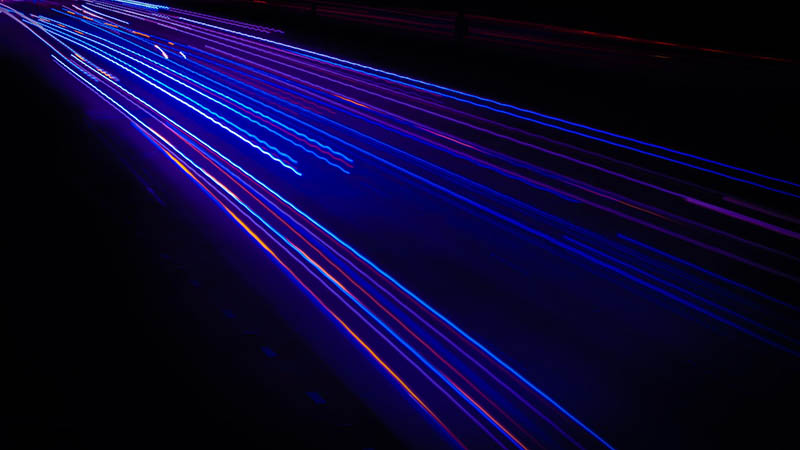
Light is vital to our existence, and it travels via energy waves called light waves. These waves are not only important because they enable us to see, but we use different types of light, which include radio and microwaves, for a vast range of different purposes. Below are 10 interesting facts about light waves.
Top 10 Light Wave Facts:
- 1. Light Is a Type of Radiation
Radiation is a type of energy that travels as electromagnetic waves. Visible light is a form of radiation. It travels in waves, with wavelength being the distance between two waves, measured at the peaks. Wavelength is actually what determines the color of light that we see, with red light having twice the wavelength of blue light, which has a wavelength of a third of one-millionth of a meter. Frequency is the number of waves that occur within a second.
- 2. Radio Waves Are Actually a Type of Light Wave
When we think about light waves, we typically think of visible light, which is the only type of light that humans can see. However, there are many other types of light waves, including X-rays, gamma rays, microwaves, and even radio waves. Although some people mistakenly think of radio waves as being related to sound because we listen to audio on radios, it is a form of light wave with a wavelength that is billions of times longer than visible light.
- 3. Light Waves Travel in a Straight Line
Light waves only travel in a straight line. When light waves hit an opaque object, they are effectively stopped and shadows form where light waves are prevented by solid objects. Light waves can, however, be reflected, refracted, and diffracted.
Reflection means that the waves change direction as they bounce off a barrier. Waves refract when they move from one medium to another. And they also diffract, which means that they can essentially bend around corners.
- 4. Light Waves Travel Poorly Through Water
Light waves travel different distances through different types of medium. Light can, theoretically, travel forever in space but travels shorter distances in air and even shorter in water. Most visible light is absorbed by the ocean by the time you reach a depth of around 10 meters, and it is pitch black by the time you reach a depth of 100 meters.
- 5. Light Is a Form of Energy Consisting of Electric and Magnetic Fields
Light is a type of electromagnetic wave, which means that it consists of both electric and magnetic fields. Other types of electromagnetic waves include radio waves, microwaves, infrared, ultraviolet, X-rays, and gamma rays. While visible light is the only type that can be seen with the naked eye, there are various sensors and other methods that can be used to detect and even “view” other forms of electromagnetism.
- 6. Light Wavelengths Are Billionths of a Meter Long
Wavelength is the distance between the peak of one wave and the next. Visible light has a wavelength between 400–700 billionths of a meter long. We see light with the longest wavelengths as the color red and light with the shortest wavelength as violet. The rainbow is actually made up of light waves with millions of different wavelengths, but we can only differentiate between the seven colors.
- 7. Visible Light Waves Are the Only Light Waves We Can See
Visible light is the only type of electromagnetic wave that we can see with the naked eye, but we can use UV detectors to view this type of wave. Some animals can also see UV light . X-rays are also viewed using a detector, which then projects the X-rays onto a screen for us to be able to see.
- 8. White Light Is Made Up of Every Other Color of the Visible Light Spectrum
White light is, in fact, made up of every other color in the spectrum: red, orange, yellow, green, blue, indigo, and violet. This means that, while other colors can be assigned a wavelength, white light can only be given a broad wavelength range between 400–700 billionths of a meter.
- 9. Light Waves Can Travel Through a Vacuum
Light waves are capable of traveling through different mediums. They can travel through the air and water, although not very far through the latter. They can also travel through a vacuum, unlike sound , which is why we can see the light of the sun.
- 10. Light Waves Can Travel at Nearly 300,000 Kilometers Per Second
Light waves travel faster than any other waves, at least in a vacuum. They travel at approximately 300,000 kilometers per second, which is described as the speed of light—nothing else can travel at this speed. Because nothing can travel faster than this, it means that humans are unlikely to be able to ever travel beyond the confines of the Milky Way .
Light waves are a form of electromagnetic waves, like X-rays and infrared, although visible light is the only type of light wave that humans can see with the naked eye. They travel in straight lines, can travel through a variety of mediums including a vacuum, and can reach a speed of nearly 300,000 kilometers per second in a vacuum.
- https://amazingfacts4u.com/light/
- https://physics.stackexchange.com/questions/41680/why-is-light-called-an-electromagnetic-wave-if-its-neither-electric-nor-magne
- http://www.waterencyclopedia.com/La-Mi/Light-Transmission-in-the-Ocean.html
- https://kidadl.com/facts/curious-facts-about-light-waves-learn-more-about-visible-light
- https://www.esa.int/Science_Exploration/Space_Science/Energy_light_radiation_temperature
- https://hubblesite.org/contents/articles/the-electromagnetic-spectrum
- https://www.nrcan.gc.ca/maps-tools-publications/satellite-imagery-air-photos/remote-sensing-tutorials/introduction/electromagnetic-spectrum/14623
- https://physicsworld.com/a/spacecraft-in-a-warp-bubble-could-travel-faster-than-light-claims-physicist
Featured Image Credit: Clyde He, Unsplash
Table of Contents
About the Author Robert Sparks
Robert’s obsession with all things optical started early in life, when his optician father would bring home prototypes for Robert to play with. Nowadays, Robert is dedicated to helping others find the right optics for their needs. His hobbies include astronomy, astrophysics, and model building. Originally from Newark, NJ, he resides in Santa Fe, New Mexico, where the nighttime skies are filled with glittering stars.
Related Articles:
How to Clean a Refractor Telescope: Step-by-Step Guide
How to Clean a Telescope Eyepiece: Step-by-Step Guide
How to Clean a Rifle Scope: 8 Expert Tips
Monocular vs Telescope: Differences Explained (With Pictures)
What Is a Monocular Used For? 8 Common Functions
How to Clean a Telescope Mirror: 8 Expert Tips
Brightfield vs Phase Contrast Microscopy: The Differences Explained
SkyCamHD Drone Review: Pros, Cons, FAQ, & Verdict

- DIGITAL MAGAZINE
MOST POPULAR
Light and lenses: 10 facts
Check out these 10 top facts about light and lenses.
ADVERTISING PROMOTION
Telescopes are pretty amazing, aren’t they? For hundreds of thousands of years, us humans have stared up at the stars in wonder. But it’s only since the invention of the telescope that we’ve finally been able to unlock the secrets of the night sky.
Amazingly, though, the technology used to make telescopes work is surprisingly straightforward. Put simply, they use pieces curved glass called lenses to magnify light . Here are 10 facts know about light and lenses to light up your day!

10 Facts about light and lenses
1. The light we see on Earth is a form of energy from the Sun . It travels through space and takes just over eight minutes to reach us. What could you do in eight minutes?
2. We call the light we can see visible light or white light . It’s actually made up of a number of colours: red, orange, yellow, green, blue, indigo and violet. You’ll see these colours in a rainbow in nature. We need special equipment to see infrared and ultra violet light because our eyes can’t normally see these types.
3. You don’t need to wait for rain to see a rainbow. You can see one if you shine a beam of light through an object called a prism . This is a clear object often made from glass or plastic, with straight polished sides . When you shine a straight beam of light through a prism, you can bend light and make it change direction . Scientists call this refraction . You’ll also be able to see the beam of light split into the colours of the rainbow. This is called the spectrum . Try it for yourself!
4. Refraction is how lenses in eye glasses, telescopes and binoculars work. In eye glasses, the lenses bend light enough to focus the image for the wearer to see clearly.
5. The telescope is one of humankind’s most important inventions. We’ve been using them since 1608 when a Dutch eyeglass maker, Hans Lippershey , is said to have invented them.
6. Telescopes and binoculars use lenses to help us see things that are far away by making them seem closer. That’s why binoculars let you see animals that are far off in the distance, and telescopes let you see the moon and stars.
7. Microscopes let scientists to see really small objects like tiny insects up close and in detail thanks to light and powerful magnifying lenses . How do you think a spider would look magnified 600 times?
8. Just like mixing paint to create a new colour, you can mix light and create new colours , too. But while you know that primary colours of paint are red, yellow and blue, did you know that the primary colours of light are red , green and blue ?
9. A red ladybird looks red because its body reflects red light while absorbing green and blue light. Special cells in our eyes see this light and tell our brains to understand it as red.
10. Animals don’t always see colours the we do. Some insects like bees can see ultra violet colours which we can’t. You may have heard that dogs can only see black and white. It turns out they can see colour, just not as much as humans can.

Terrific telescopes
Check out the range of incredible telescopes from Learning Resources . They are the perfect instruments for exploring the cosmos from the comfort of your own garden.

Take a tour of the nighttime sky with Nancy B’s Science Club® MoonScope . This cool bit of kit comes with its own tripod and two eye pieces offering 18x to 90x magnification. The Moon filter finder scope comes with built in red LED that enables night viewing , too. Plus, there’s the Sky Gazer’s Activity Journal , which is packed full of awesome exploration activities.
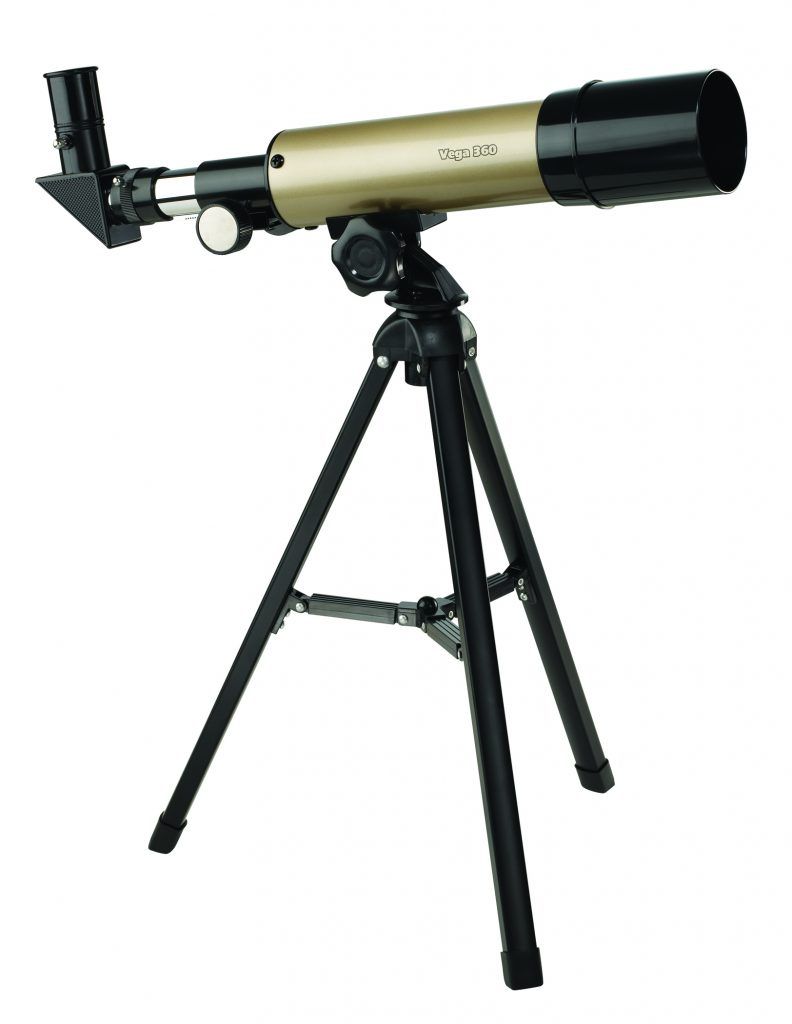
The durable, lightweight GeoSafari® Vega 360 Telescope allows you to explore the natural wonders of the Earth, Moon and beyond. It delivers clear, up‐close images at magnifications of 20x to 80x . The tabletop tripod makes exploring on‐the‐go easy. It includes two interchangeable eyepieces and an image erector for viewing earth-based subjects, too.
Competition
Fancy getting your hands on one of these spectacular telescopes? We’re giving away one Nancy B’s Science Club MoonScope and Sky Gazer’s Activity Journal and one GeoSafari Vega 360 Telescope . Click here to find out how to enter.

LEAVE A COMMENT
Your comment will be checked and approved shortly.
WELL DONE, YOUR COMMENT HAS BEEN ADDED!
Customize your avatar, more like general science.

BBC micro:bit – what’s it all about?

15 Facts About The Human Body!

Your Amazing Eyes!

Your Amazing Brain!

Sign up to our newsletter
Get uplifting news, exclusive offers, inspiring stories and activities to help you and your family explore and learn delivered straight to your inbox.
You will receive our UK newsletter. Change region
WHERE DO YOU LIVE?
COUNTRY * Australia Ireland New Zealand United Kingdom Other
By entering your email address you agree to our Terms of Use and Privacy Policy and will receive emails from us about news, offers, activities and partner offers.
You're all signed up! Back to subscription site
Type whatever you want to search
More Results

You’re leaving natgeokids.com to visit another website!
Ask a parent or guardian to check it out first and remember to stay safe online.

You're leaving our kids' pages to visit a page for grown-ups!
Be sure to check if your parent or guardian is okay with this first.
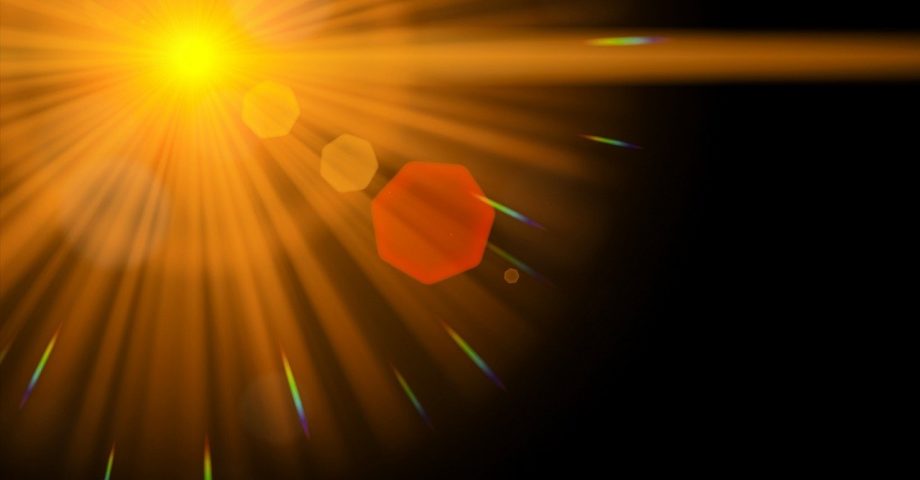
17 Illuminating Facts About Light
Light is, of course, one of the key essentials for all life on Earth to thrive and survive. Think of all our plant life – and our own lives, too! Light is a strange phenomenon which we actually seem to take for granted far too often!
Therefore, we’ve put together a fact file of sorts to help clue you in on some of the most interesting trivia bits and pieces likely to fascinate you – even if you already dabble in a bit of simple science on the occasion – here’s a stack of fun facts about light!
1. We have limited light receptors!
Humans can’t actually see all colors that exist. We actually have very limited vision when it comes to light! Many animals – such as chickens, believe it or not – can see many more colors than we can.
2. Light has always intrigued us
The way we see and perceive light has been up for debate for centuries. Perhaps most fascinatingly, Plato once thought that we were able to shoot light from our eyes. That’d be amazing, but sadly, it’s not true.
3. You can (technically) fit lasers to your eyes!
However, there is a laser which exists that can be fitted to contact lenses. It’s not the sort of laser which will allow you to melt or burn things down, however, it might come in handy when it comes to passing specific security controls, for example.

4. The majority of wildlife can glow in the dark!
It’s thought that around 90% of all animals and creatures that live deeper than 1,500 feet into our oceans are bioluminescent, which means that they have the natural ability to give off light.
In fact, one of the most terrifying bioluminescent creatures is the angler fish. It uses a trick whereby it dazzles its prey with a bright light, hanging from its head like a rod, before swallowing them whole.
5. …That includes us!
Humans, believe it or not, are bioluminescent, too! The saddest part is, we don’t have the visual capability to be able to tell – we don’t glow strongly enough for our eyes to pick up!
6. Light hasn’t always been here
It’s thought that light didn’t actually exist in the universe until 500,000 years after the Big Bang. This means the universe was far away from expanding big enough to let light comfortably travel and bounce around.
7. Light is fast, but limited
Light travels extremely quickly in a vacuum, but it is possible to stunt its speed in restricted spaces.
8. You can be allergic to light!
Some people sneeze when subjected to bright lights. It’s thought to affect up to 35% of people, and it’s related to the photic sneeze reflex. The most bizarre part of all of this is the fact that no one really knows why this is even a thing!
9. Germany’s lighting differs from East to West
It’s completely possible to spot differences between East and West Germany from the air. That’s because they use different types of lightbulbs!

10. It’s true – light is amazingly fast
In fact, it’s thought that light can travel up to 299,792km per second when in a vacuum.
11. Light can bend – thankfully!
Light travels in straight lines called waves, largely, however, it can bend when it hits objects. This, ultimately, is how we are able to illuminate our homes.
12. Newton tried a few terrifying light tricks
Sir Isaac Newton, who famously discovered the phenomenon of gravity, was actually invested in discovering how light works, too. However, he had a rather unorthodox way of exploring the way our eyes perceive color – he poked needles in his eye sockets! DON’T try that at home!

13. Light could help in medicine and healthcare
Believe it or not, in some cases, light is being used to detect diseases such as malaria. This takes place through laser interactions with red blood cells. This method of diagnosis, in the case of malaria, is thought to be 85% effective and accurate.
14. A light jiffy is very quick!
A jiffy is a unit of measurement which dictates how long it takes for light to travel up to a centimeter. Therefore, saying you’ll be ‘there in a jiffy’ literally means you’ll be there right away.
15. Goldfish have amazing light receptors
Goldfish have one over on us when it comes to light perception. Unlike humans, goldfish are able to see infrared radiation!

16. Birds have ultra vision!
What’s more, birds can see UV light – we can’t, though it is hugely damaging to us.
17. Blue light can de-stress you
It’s thought that blue light has the ability to calm people down. In fact, studies suggest that blue light can help to tone down aggression and feelings of helplessness. In some territories such as Scotland, blue light is used in street lighting to help quell crime rates.
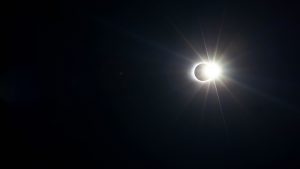
FAQs about Light
If a human could travel at the speed of light, what distance could they travel in a second.
In a single second a human traveling at the speed of light could circumnavigate planet Earth 7.5 times!
Why do we see the lightning of a thunderstorm before hearing the sound?
We see the flashes of lightning before hearing thunder because light travels faster than sound.
Was the speed of light discovered by accident?
Yes it was! In 1676 a Danish astronomer called Ole Roemer made the discovery. He was in a French observatory at the time and he wasn’t even looking for it! He was observing other astronomical phenomena at the time.
Do you know any fun facts about light? Share them in the comments below!
Are you fascinated with physics? Check out these fun facts about radio waves …
`these are amazing facts i am even using them for a science project so thank you for these facts!!!
Leave a Reply
Your email address will not be published. Required fields are marked *
Save my name, email, and website in this browser for the next time I comment.
This page was last modified on April 16, 2024. Suggest an edit
Related 'Random' Facts

27 Ultimate Facts About Chess

8 Sensational Facts About Spider-Man

9 Affordable Facts About Amazon
Share these facts, there are 1000s of interesting and fun facts to learn about our planet..
Explore our world map to discover some fascinating facts for every country…

Latest Facts

What Happened in 1975?

12 Important Facts About How to Survive a Hurricane

11 Pernicious Facts About Piranhas

12 Lively Facts About Lincolnshire
- Fact of the Day
- In This Year
- On This Day

21 Interesting Facts About The Speed Of Light (Light Up)
Welcome to our latest blog post, where we’ll be exploring 21 interesting facts about the speed of light! Are you ready to discover some mind-blowing information about one of the most fundamental concepts in physics?
From its role in Einstein’s theory of relativity to its impact on everyday technology, the speed of light is truly fascinating. So, without further ado, let’s dive in and discover some incredible facts about this mysterious and powerful force.

Top Facts About The Speed of Light
Random facts about the speed of light.
- The Speed of Light is constant and unchanging, regardless of the motion of the observer or the source of the light.
- The speed of light is a fundamental constant in physics, and is used to define the meter and second units of measurement.
- The speed of light is approximately 299,792,458 meters per second.
- The Speed of Light is a central concept in Einstein’s theory of special relativity, published in 1905.
- The Speed of Light is affected by the medium it is traveling through, such as air or water, and will be slower in these materials.
- The Speed of Light is also used to calculate the distance between stars and galaxies.
- The Speed of Light is the fastest that any information can travel, this is known as the “information speed limit”
- The speed of light is so fast that it is difficult to measure accurately, but scientists have been able to measure it to within a few parts per billion.
- The Speed of Light is so fast that it takes light from the nearest star outside our solar system, Proxima Centauri, over 4 years to reach us.
- The Speed of Light is one of the fundamental constants of nature and is used in many scientific formulas and calculations.
- The Speed of Light is also important in understanding the nature of black holes and the Big Bang theory.
- The Speed of Light is the fastest anything can travel through space, this is known as the “cosmic speed limit”.
- The Speed of Light is important in the Study of Optics.
- The Speed of Light is used in the development of new technologies, such as fiber optics and laser systems.
- The Speed of Light is so fast that it is often used as a standard to measure other speeds.
Table of Contents
1. the speed of light is approximately 299,792,458 meters per second..
Did you know that light travels incredibly fast? In fact, physicists estimate the speed of light to be an astonishing 299,792,458 meters per second!
That’s nearly 300 million meters per second. Put into perspective, light can go around the world 7.5 times in one single second! Weak electromagnetic signals like radio waves take years or even centuries to traverse distances on the same scale while light travels effectively instantaneously.
This is why it’s sometimes referred to as a “universal speed limit.” Now you see why most scientists refer to it as the fastest thing in the universe!
2. The Speed of Light is important in the Study of Optics
The Speed of Light is an essential factor when studying Optics. It is fundamental to any curriculum and research endeavors within the field.
Those who explore the notion of Optics frequently look to the speed of light as a benchmark in their experimentations. Interesting insights are discovered by measuring how light behaves and changes under different conditions, including its rate of speed.
For example, through careful observation, we can study ways to manipulate how energy is refracted or bounces off certain objects. Ultimately, understanding the components and intricacies that make up The Speed of Light further deepens our comprehension of this important scientific concept.
3. The Speed of Light is constant and unchanging, regardless of the motion of the observer or the source of the light.
The speed of light is unyielding – it inflexibly stays the same, no matter the motion of the observer or the source of the light. This integral speed can be written into scientific equations and witnessed in nature.
It functions as a steadfast law, not altering its velocity whether observed from a speeding car or an object at rest. The constancy remains palpable ever since 1865 when scientists recognized its values encompassing every corner of our universe.
Even if we shift or limit perspective, that peremptory luminous velocity remains unmoved and undeterred. Its omnipresence is illuminated in its grand magnitude whose figurative power is measured by factuality and immutability.
4. The Speed of Light is the same in all directions, regardless of the direction in which it is traveling.
The speed of light acts as a conduit, unchanging across every direction. It is never influenced by the course it’s taking.
Whether in a northward drift, a sharp pivot eastward, or following the curve of Earth straight down to the surface, light rockets forth with the same blazing momentum at all times.
This mysterious phenomenon astounds scientists, having held constant regardless of any exterior factors for centuries. The speed of light remains fixed and devout to its everlasting laws, no matter what fate awaits it in the cosmos.

12. The Speed of Light is a central concept in Einstein’s theory of special relativity, published in 1905.
In 1905, a ground-breaking theory was presented by the esteemed scientist Albert Einstein. Entitled special relativity, it proclaimed that nothing in the universe could travel faster than the speed of light.
This concept of rapid light particles assumed importance within the context of this famous physicist’s publication.
It established the unbreakable threshold for physical velocity, beyond which no object can travel, further revolutionizing our understanding of reality.
13. The Speed of Light is also important in understanding the nature of black holes and the Big Bang theory.
The speed of light holds vital importance, especially when seeking an understanding of phenomena such as black holes and the Big Bang theory.
Its influence in science is immense – from small quantum scales to massive galactic levels and everything in between.
The amount of energy needed for light to propagate at a certain rate is scientifically staggering, giving us insight into the inner workings of our universe.
Without this fascinating velocity, we would know far less about our world and what lies beyond it.
READ ALSO: 24 Fun Facts About Dark Matter You Won’t Believe
14. the speed of light is so fast that it is often used as a standard to measure other speeds..
The speed of light is unfathomably fast, a true benchmark in speed measurement. It multiplies itself 227,000 times over every second that it flies, beyond anything an ordinary person could easily comprehend.
This incredible feat does not go unrecognized: light has been used as a standard across various fields to understand and compute other displacement speeds from sound waves to space travel. The significance of this measure explains its never-ending use across time.
15. The Speed of Light is used in the development of new technologies, such as fiber optics and laser systems.
The speed of light has become a valuable asset in the progression of technology. Its properties have allowed us to create much more reliable communication networks, made known as fiber optics.
Laser systems that are even faster have been synthesized, utilizing aspects of optics and the speed at which photons travel, most famously illustrated by Einstein’s Theory of Relativity.
Such advancements in the technologies involving light have had beneficial impacts on our lives today, increasing the capability to communicate across long distances with unbeatable speeds.

20. The Speed of Light is so fast that it takes light from the nearest star outside our solar system, Proxima Centauri, over 4 years to reach us.
Did you know that the speed of light is incredible? Its velocity is an amazing 300,000 km per second! So fast, in fact, that it takes over 4 years for light from the closest star outside our solar system – Proxima Centauri – to reach us.
This can be difficult to comprehend, considering it may take someone more than 4 years to drive across the United States!
Despite this length of time passing, Proxima Centauri looks twinkling and as beautiful in one yeas during the next due to its beam having already left a long time ago.
Amazingly, we simply wait for the flashback of luminescence upon arrival here on Earth.
21. The Speed of Light is the fastest that any information can travel, this is known as the “information speed limit”.
With a speed of 299,792,458 meters per second, the speed of light is believed to be the fastest that any information can travel. This is renowned between physicists as the “information speed limit”–regaling its inhuman velocity.
For example, it would take only 1.3 seconds for light to circle the Earth! What would have taken days to translate across large distances a few centuries ago now happens within moments due to this incredible natural phenomenon.
It’s quite amazing to think about how this has changed what we’re able to understand and discover–particularly in regard to our universe, where transporting something more than a tiny fraction of light’s velocity away still takes hours, years, and even eons to reach our telescopes on Earth today.
Related Posts

27 Facts About Termites You Never know

17 Facts About Owls For Kids You Didn’t Know

23 Facts About Ants (Tiny Ants with Mighty Facts)

25 Fun Facts About Jellyfish You Need to Know

25 Facts About Dogs You Never Knew

25 Fun Facts About Cats You Didn’t Know

Is Time Travel Possible?
We all travel in time! We travel one year in time between birthdays, for example. And we are all traveling in time at approximately the same speed: 1 second per second.
We typically experience time at one second per second. Credit: NASA/JPL-Caltech
NASA's space telescopes also give us a way to look back in time. Telescopes help us see stars and galaxies that are very far away . It takes a long time for the light from faraway galaxies to reach us. So, when we look into the sky with a telescope, we are seeing what those stars and galaxies looked like a very long time ago.
However, when we think of the phrase "time travel," we are usually thinking of traveling faster than 1 second per second. That kind of time travel sounds like something you'd only see in movies or science fiction books. Could it be real? Science says yes!

This image from the Hubble Space Telescope shows galaxies that are very far away as they existed a very long time ago. Credit: NASA, ESA and R. Thompson (Univ. Arizona)
How do we know that time travel is possible?
More than 100 years ago, a famous scientist named Albert Einstein came up with an idea about how time works. He called it relativity. This theory says that time and space are linked together. Einstein also said our universe has a speed limit: nothing can travel faster than the speed of light (186,000 miles per second).
Einstein's theory of relativity says that space and time are linked together. Credit: NASA/JPL-Caltech
What does this mean for time travel? Well, according to this theory, the faster you travel, the slower you experience time. Scientists have done some experiments to show that this is true.
For example, there was an experiment that used two clocks set to the exact same time. One clock stayed on Earth, while the other flew in an airplane (going in the same direction Earth rotates).
After the airplane flew around the world, scientists compared the two clocks. The clock on the fast-moving airplane was slightly behind the clock on the ground. So, the clock on the airplane was traveling slightly slower in time than 1 second per second.
Credit: NASA/JPL-Caltech
Can we use time travel in everyday life?
We can't use a time machine to travel hundreds of years into the past or future. That kind of time travel only happens in books and movies. But the math of time travel does affect the things we use every day.
For example, we use GPS satellites to help us figure out how to get to new places. (Check out our video about how GPS satellites work .) NASA scientists also use a high-accuracy version of GPS to keep track of where satellites are in space. But did you know that GPS relies on time-travel calculations to help you get around town?
GPS satellites orbit around Earth very quickly at about 8,700 miles (14,000 kilometers) per hour. This slows down GPS satellite clocks by a small fraction of a second (similar to the airplane example above).

GPS satellites orbit around Earth at about 8,700 miles (14,000 kilometers) per hour. Credit: GPS.gov
However, the satellites are also orbiting Earth about 12,550 miles (20,200 km) above the surface. This actually speeds up GPS satellite clocks by a slighter larger fraction of a second.
Here's how: Einstein's theory also says that gravity curves space and time, causing the passage of time to slow down. High up where the satellites orbit, Earth's gravity is much weaker. This causes the clocks on GPS satellites to run faster than clocks on the ground.
The combined result is that the clocks on GPS satellites experience time at a rate slightly faster than 1 second per second. Luckily, scientists can use math to correct these differences in time.

If scientists didn't correct the GPS clocks, there would be big problems. GPS satellites wouldn't be able to correctly calculate their position or yours. The errors would add up to a few miles each day, which is a big deal. GPS maps might think your home is nowhere near where it actually is!
In Summary:
Yes, time travel is indeed a real thing. But it's not quite what you've probably seen in the movies. Under certain conditions, it is possible to experience time passing at a different rate than 1 second per second. And there are important reasons why we need to understand this real-world form of time travel.
If you liked this, you may like:
25 surprising travel facts that’ll make you see the world in a whole new light

Apr 2, 2020 • 8 min read
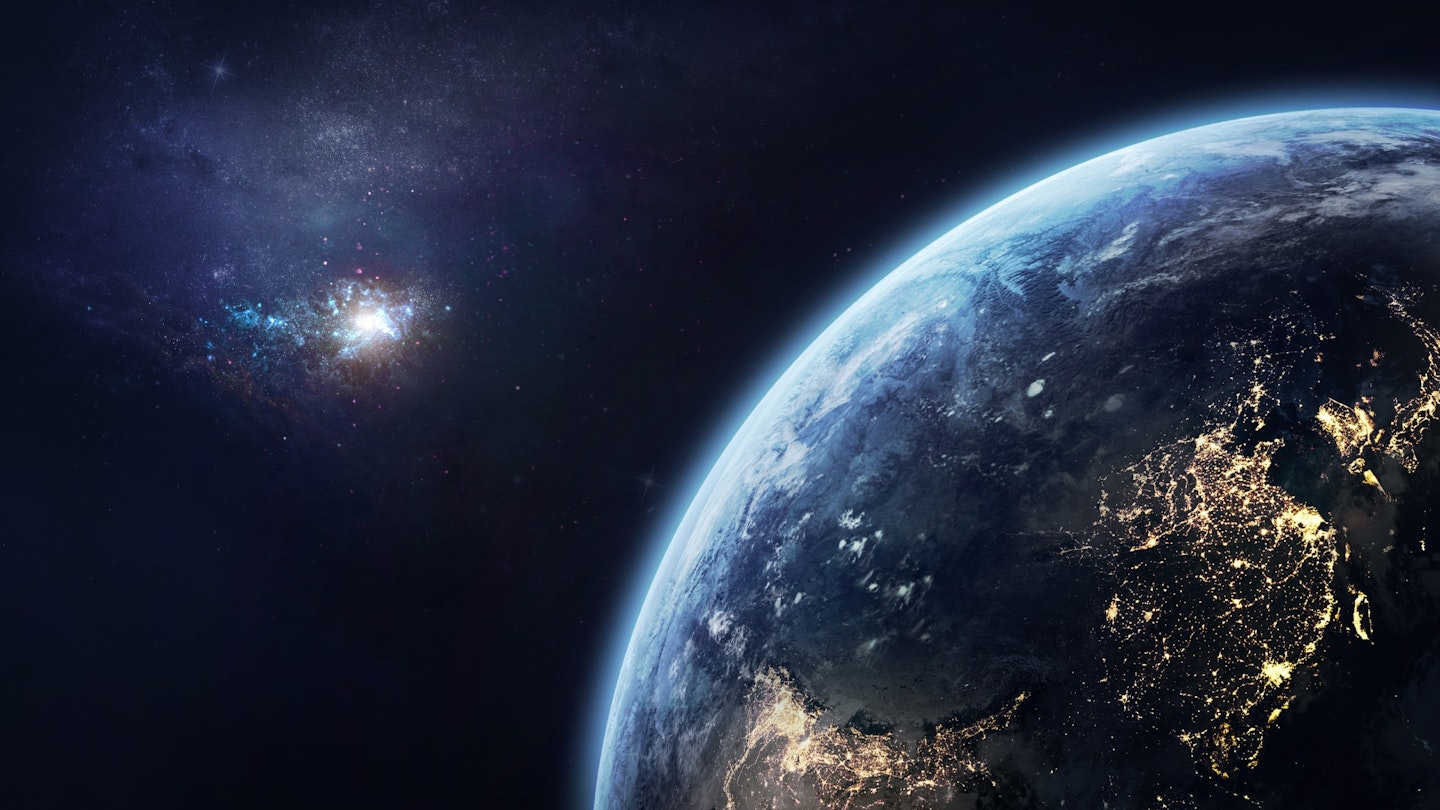
Travel: we sort of know all about it, right? Wrong. Scratch beneath the surface and it turns out we know nothing of this world. Do you know how long the world’s shortest commercial flight lasts, for example? (clue: shorter than the time it takes to boil an egg.) How about which country has no rivers? Or what unconventional pizza topping is popular in Sweden ?

With international travel currently off the table, why not use this time to swat up on surprising travel trivia, offering a few precious minutes of sweet relief from the constant news cycle and providing some fun facts to fill awkward pauses during video calls with friends and family; trust us, nothing plugs a silence better than a stat about how many steps from the nearest trash bin you are in Disneyland at all times.
Without further ado, here’s 25 travel facts that are certain to shock and surprise.

Trains, planes and automobiles...
1. The world’s longest commercial flight took around 30 hours.
The so-called ‘Double Sunrise’ service by Qantas, which ran from Australia to Sri Lanka from 1943-45, often lasted over 30 hours, with passengers seeing the sunrise twice. Today the longest commercial flight is the Singapore Airlines Singapore to New York route, with an average journey time of 17 hours and 50 minutes.
2. The shortest commercial flight takes less than two minutes.
Incredibly, the shortest commercial flight, operating between the neighbouring islands of Westray and Papa Westray in Scotland ’s Orkney islands , takes around one and a half minutes. With the fastest recorded flight taking less than 50 seconds.
3. Japanese railways hand out ‘certificates’ for delays of more than five minutes.
Japanese trains, reputedly the most punctual in the world, issue passengers with a ‘delay certificate’ if a train is running more than five minutes behind schedule. The documents can be shown to bosses or teachers to explain a passenger’s lateness. Delay certificates are also issued on some trains in Germany and in Paris .
4. The most expensive airport to city taxi ride costs around £190.
Any budget traveller worth their salt attempts to avoid airport taxis at all costs, but anyone keeping an eye on their finances should certainly avoid jumping in a cab from Tokyo ’s Narita Airport. According to a study by Moneycorp (a currency exchange company), the ride is the most expensive airport-to-city transfer in the world, costing an average of £191/$235 one way.
5. India’s trains transport roughly 23 million passengers each day.
That’s the entire population of Australia . Additionally, if laid out in a single line, the tracks from India’s railway network could circle the world one and a half times.

Things you didn’t know about countries…
6. Saudi Arabia has no rivers.
The country in the Arabian peninsula has no permanent rivers. It is one of the 17 countries in the world without a single river flowing through it.
7. In Ethiopia the current year is 2013.
Ethiopia maintains its own calendar, which, due to a difference in the perceived date of the Annunciation (the proclamation of the birth of Christ), is seven to eight years behind the Gregorian calendar (which is used as standard across most of the world). In Ethiopia the new year also begins on either August 29 or August 30.
8. It is the same time at both ends of China.
Despite spanning five geographical time zones, China only has one set time, which is observed throughout the country. China Standard Time is UTC+8.
9. The UK has the world’s longest country name.
The UK ’s official title of The United Kingdom of Great Britain and Northern Ireland makes it the longest recognised country name in the world.
10. Alaska is both the westernmost and easternmost state in the USA.
Alaska ’s Aleutian Islands are actually located west of the 180th Meridian (the line that divides the eastern and western hemisphere), making it the only US state to be partly located in the eastern hemisphere.

Foodie facts...
11. The most ordered meal on Deliveroo, a leading takeout app, in 2019 was a Hawaiian dish of raw fish.
Of all the restaurants served by the app, which operates in over 200 cities around the world, the most ordered meal was the Poké Signature Super Protéiné – a Hawaiian dish with raw fish as the core ingredient – from restaurant Pokawa in the city of Paris . Less exotic, a humble cheeseburger from the London branch of chain restaurant Five Guys was the second most ordered dish on the app.
12. Russia only classified beer as an alcoholic drink in 2011
Remarkably before then any drink with less than 10% alcohol was considered a ‘foodstuff’.
13. Pilots and co-pilots do not eat the same meal before a flight.
As part of standard convention, pilots and co-pilots do not eat the same food before a flight in case of food poisoning (or worse). If one of the pilots is incapacitated (unable to leave the bathroom) then the other pilot can take over.
14. Banana is a popular pizza topping in Sweden.
Often paired with curry powder believe it or not.
15. Instant noodles topped a Japanese poll of the country’s greatest inventions of the 20th century.
In the poll, conducted in the year 2000 by Fuji Research Institute, respondents placed instant noodles at the top of the list, followed by karaoke in second place. Incidentally karaoke translates from Japanese into English as ‘empty orchestra’.

Lesser-known aspects of famous landmarks...
16. Despite what people say, the Great Wall of China is not visible from space.
Even from low Earth orbit the structure requires magnification to be seen by the human eye.
17. The Eiffel Tower was initially greatly disliked by the Parisian art community upon opening.
The iconic tower was labelled as ‘monstrous’ and ‘ridiculous’ after it was unveiled to the world. It’s even claimed that contemporary writer Guy de Maupassant disliked the structure so much that he ate lunch in the tower every day because it was the only place in Paris where the landmark was not visible.
18. The scenic Great Ocean Road, that sweeps along the coast of Victoria, Australia, is actually a war memorial.
Built by soldiers and dedicated to those who lost their lives in WWI, the road serves as the largest war memorial in the world.
19. Sudan has more ancient pyramids than Egypt.
Sources vary, but Sudan is claimed to be home to around 250 pyramid structures, that were built by the rulers of the ancient Kushite kingdoms between 2500BC to 300AD. Egypt is thought to have just over 100 pyramids.
20. The minarets of the Taj Mahal lean outwards slightly.
This was done deliberately to ensure that if the structure collapsed the minarets would fall away from the central tomb, and not destroy it. It’s also true that a team of 20,000 artisans and craftsmen built the iconic structure, but the popular story about them all being amputated by Shah Jahan, the ruler who commissioned it, upon completion (so they’d never build anything as beautiful), is most likely a myth.

Everything else...
21. There are currently 320,000 people learning ‘Klingon’ (the fictional language featured in television show Star Trek ) on language app Duolingo.
English is the most popular language on the app, with 34 million people undertaking lessons since the beginning of 2020.
22. On the island of Yap, a state of Micronesia, rocks are used as currency.
Each rock’s worth is based on its size and its history (where it came from). Though US dollars have now started to be used for everyday purchases on the island, rocks are still used for ceremonial transactions (during weddings, for example). Yap also uses turmeric, shells and cloth as official currency.
23. If it was as densely populated as New York City, the entire world's population could fit into the US state of Texas.
We wouldn’t have all that much room, but, with the rest of the planet uninhabited, there’d be plenty of places to go to escape the crowds.
24. You’re never more than 30 steps away from a trash can in Disneyland.
The story goes that Walt Disney used to observe visitors in the park and see how many steps they took before littering, as a result a litter bin is never more than 30 steps away in any Disney park. Another of Walt’s lesser-known Disneyland additions was the creation of a secret bar hidden inside the – then otherwise 'dry' – park, which he used to entertain personal guests and sponsors. The speakeasy-style venue, located behind a large door in the New Orleans Square section of the park, now runs as a private members club with an annual membership fee of $10,000.
25. You don't need to wait an hour after eating before you can swim safely.
Despite what your mother always told you, there is no medical data that suggests you can’t swim on a full stomach. It can, however, feel uncomfortable, and potentially lead to a feeling of nausea, so it’s best to take a short pause after polishing off your sandwich before you go crashing into the surf.
You might also like: Lonely Planet’s Ultimate Travel Quiz The amazing history of the London Tube Relax and unwind with these 7 Slow TV travel vids
Explore related stories

Food and Drink
Apr 20, 2024 • 9 min read
A cooking class is a great way to get acquainted with a new destination. Food writer, Malia Yoshioka, shares her guide to the world's best.

Apr 19, 2024 • 6 min read

Apr 19, 2024 • 8 min read

Apr 18, 2024 • 10 min read

Apr 18, 2024 • 11 min read

Apr 18, 2024 • 7 min read

Apr 17, 2024 • 6 min read

Apr 17, 2024 • 8 min read

Apr 16, 2024 • 12 min read

Venus Facts
Venus is the second planet from the Sun, and our closest planetary neighbor. It's the hottest planet in our solar system, and is sometimes called Earth's twin.
Quick Facts
Venus is the second planet from the Sun.
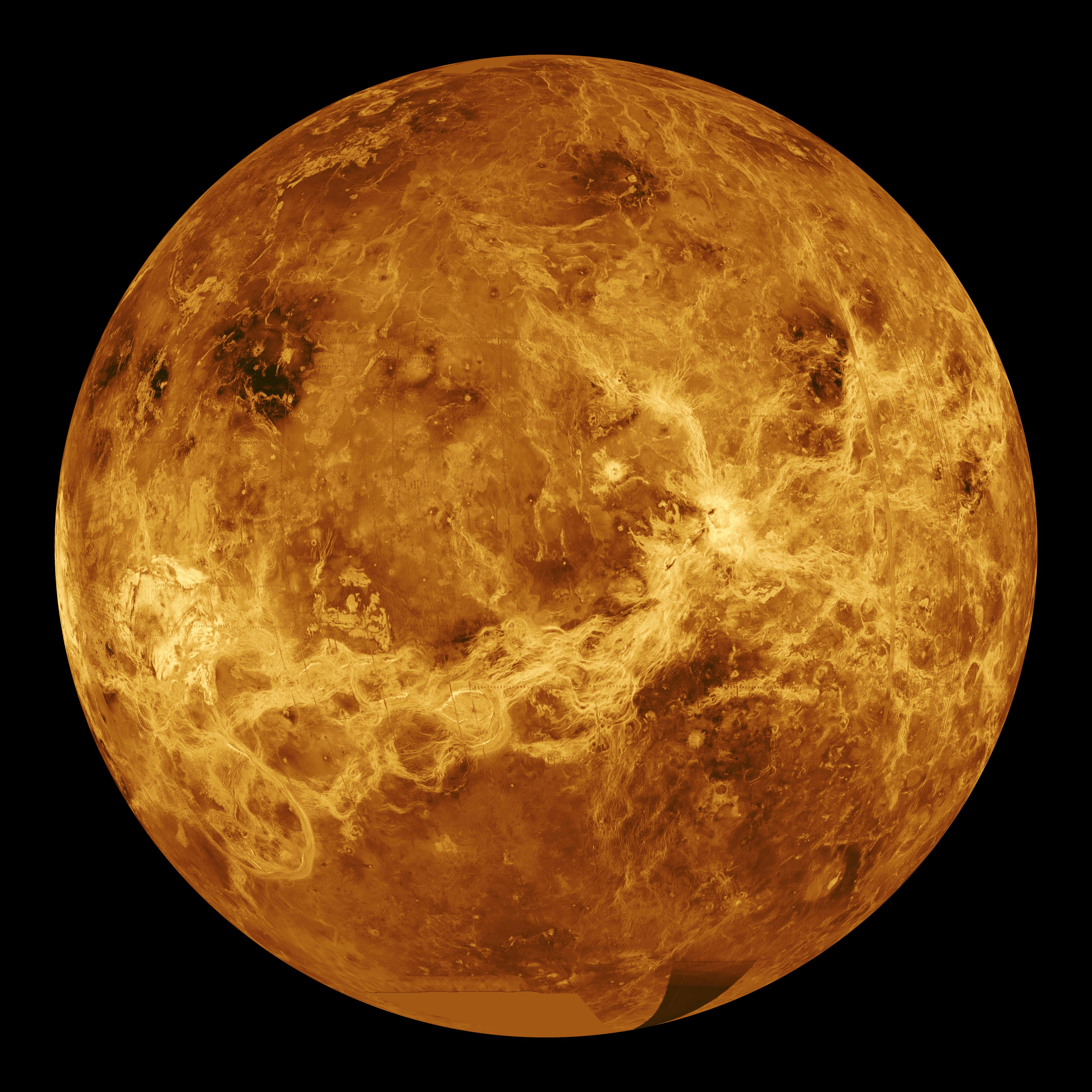
Venus is a bit smaller than Earth. It's 7,521 miles (12,104 kilometers) across, and Earth is 7,926 miles (12,756 kilometers).
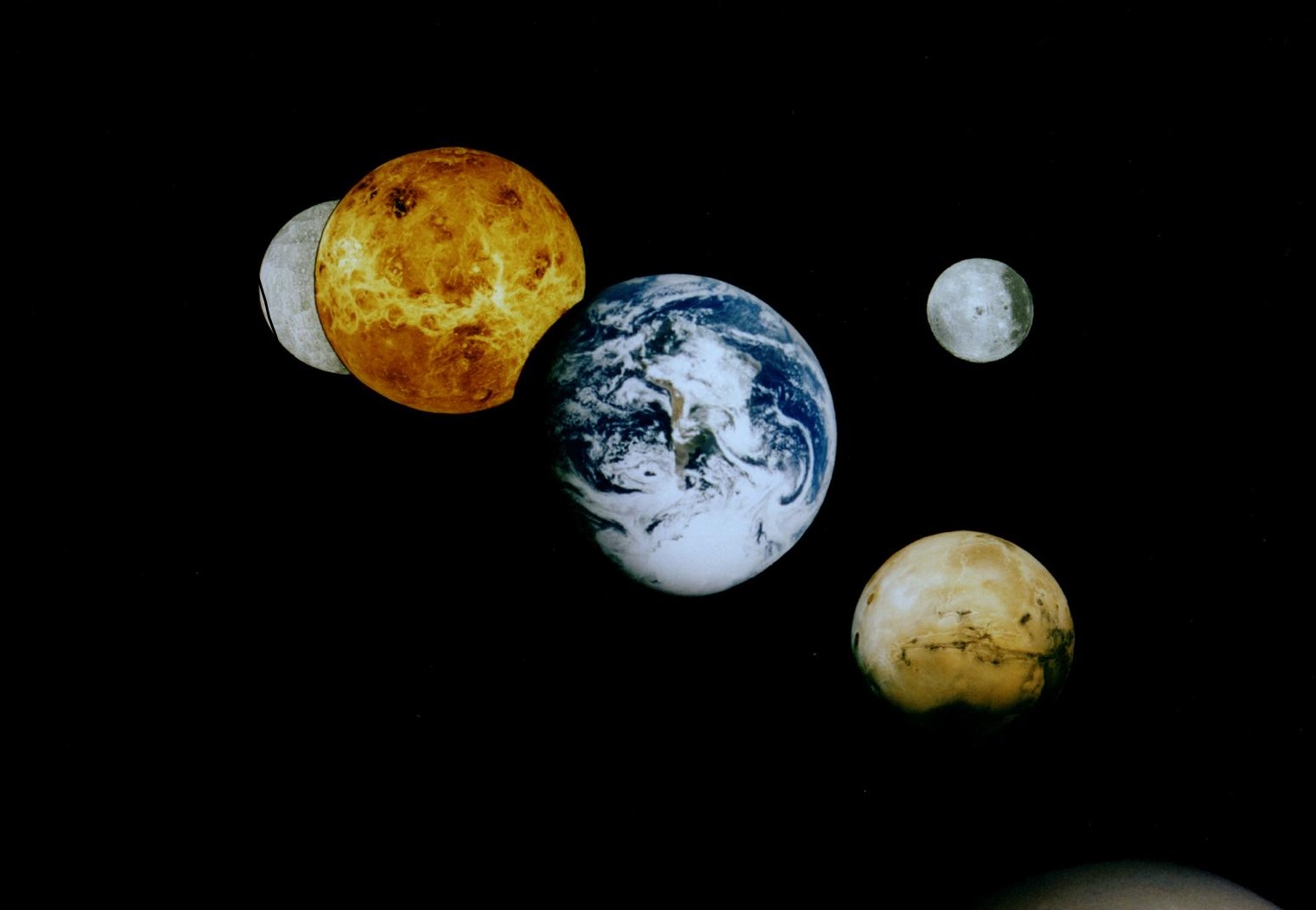
On Venus, the Sun would rise in the west and set in the east, because Venus spins backward compared to Earth.
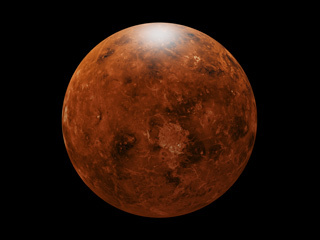
Except for Earth, Venus has by far the fewest impact craters of any rocky planet.
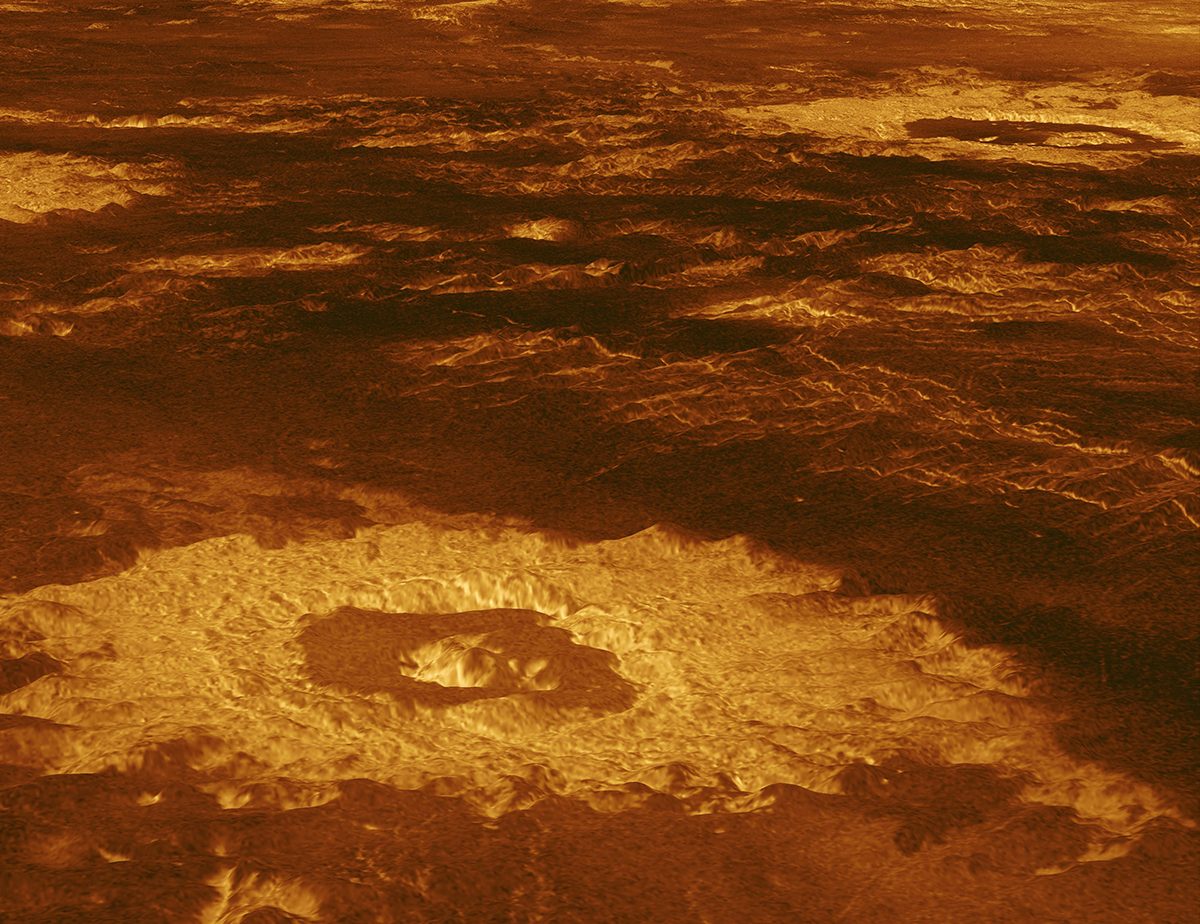
Venus is named for the ancient Roman goddess of love and beauty, who was known as Aphrodite to the ancient Greeks. Most features on Venus are named for women.
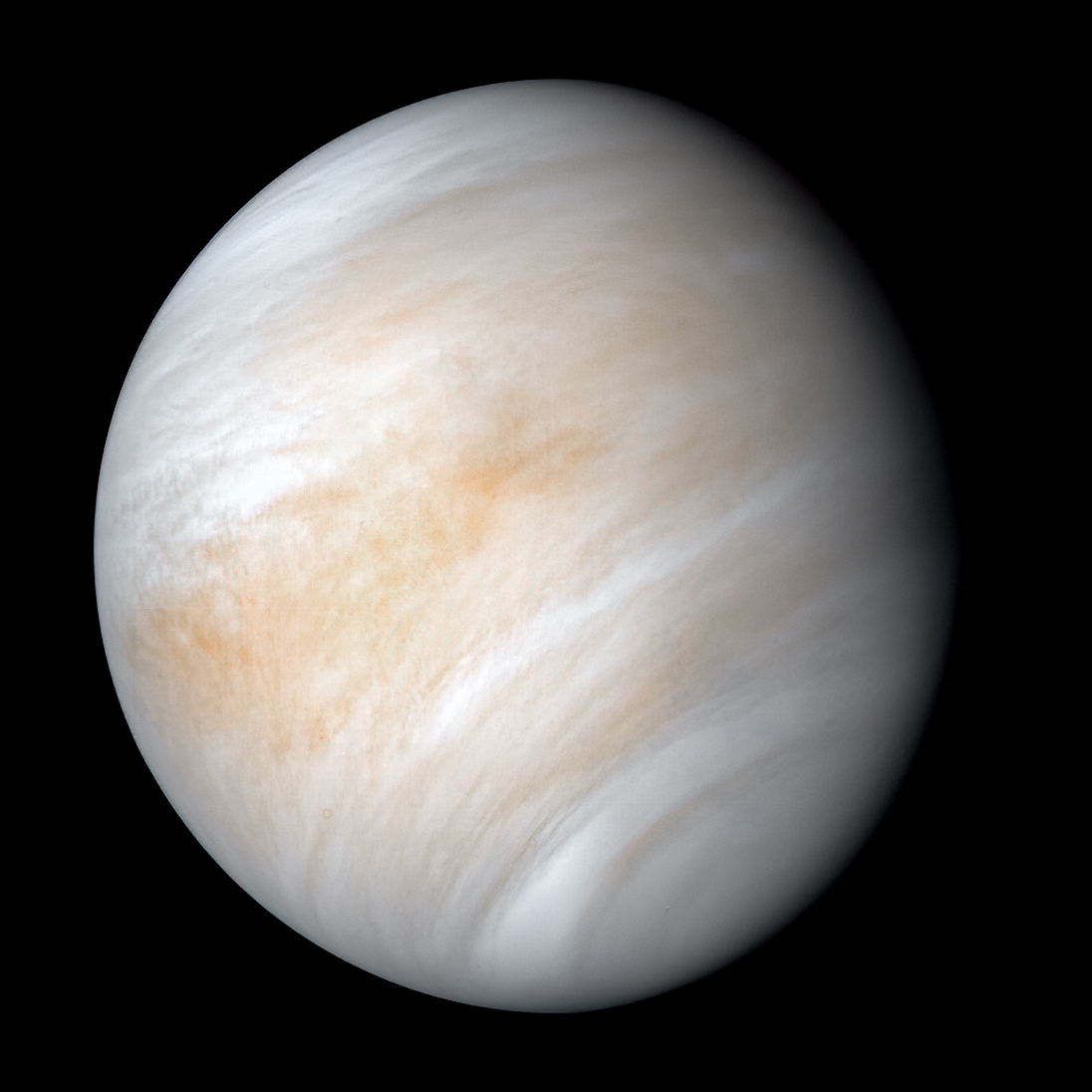
Introduction
Venus is the second planet from the Sun, and Earth's closest planetary neighbor. Venus is the third brightest object in the sky after the Sun and Moon. Venus spins slowly in the opposite direction from most planets.
Venus is similar in structure and size to Earth, and is sometimes called Earth's evil twin. Its thick atmosphere traps heat in a runaway greenhouse effect, making it the hottest planet in our solar system with surface temperatures hot enough to melt lead. Below the dense, persistent clouds, the surface has volcanoes and deformed mountains.
How Venus Got Its Name
The ancient Romans could easily see seven bright objects in the sky: the Sun, the Moon, and the five brightest planets: Mercury, Venus, Mars, Jupiter, and Saturn. They named the objects after their most important gods.
Venus is named for the ancient Roman goddess of love and beauty, who was known as Aphrodite to the ancient Greeks. Most features on Venus are named for women. It’s the only planet named after a female god.
Potential for Life
Thirty miles up (about 50 kilometers) from the surface of Venus temperatures range from 86 to 158 Fahrenheit (30 to 70 Celsius). This temperature range could accommodate Earthly life, such as “extremophile” microbes. And atmospheric pressure at that height is similar to what we find on Earth’s surface.
At the tops of Venus’ clouds, whipped around the planet by winds measured as high as 224 mph (360 kph), we find another transformation. Persistent, dark streaks appear. Scientists are so far unable to explain why these streaks remain stubbornly intact, even amid hurricane-force winds. They also have the odd habit of absorbing ultraviolet radiation.
The most likely explanations focus on fine particles, ice crystals, or even a chemical compound called iron chloride. Although it's much less likely, another possibility considered by scientists who study astrobiology is that these streaks could be made up of microbial life, Venus-style. Astrobiologists note that ring-shaped linkages of sulfur atoms, known to exist in Venus’ atmosphere, could provide microbes with a kind of coating that would protect them from sulfuric acid. These handy chemical cloaks would also absorb potentially damaging ultraviolet light and re-radiate it as visible light.
Some of the Russian Venera probes did, indeed, detect particles in Venus’ lower atmosphere about a micron in length – roughly the same size as a bacterium on Earth.
None of these findings provide compelling evidence for the existence of life in Venus’ clouds. But the questions they raise, along with Venus’ vanished ocean, its violently volcanic surface, and its hellish history, make a compelling case for missions to investigate our temperamental sister planet. There is much, it would seem, that she can teach us.
Size and Distance
Venus orbits the Sun from an average distance of 67 million miles (108 million kilometers), or 0.72 astronomical units. One astronomical unit (abbreviated as AU), is the distance from the Sun to Earth. From this distance, it takes sunlight about six minutes to travel from the Sun to Venus.
Earth's nearness to Venus is a matter of perspective. The planet is nearly as big around as Earth. Its diameter at its equator is about 7,521 miles (12,104 kilometers), versus 7,926 miles (12,756 kilometers) for Earth. From Earth, Venus is the brightest object in the night sky after our own Moon. The ancients, therefore, gave it great importance in their cultures, even thinking it was two objects: a morning star and an evening star. That’s where the trick of perspective comes in.
Because Venus’ orbit is closer to the Sun than ours, the two of them – from our viewpoint – never stray far from each other. The ancient Egyptians and Greeks saw Venus in two guises: first in one orbital position (seen in the morning), then another (your “evening” Venus), just at different times of the year.
At its nearest to Earth , Venus is about 24 million (about 38 million kilometers) distant. But most of the time the two planets are farther apart; Mercury, the innermost planet, actually spends more time in Earth’s proximity than Venus.
One more trick of perspective: how Venus looks through binoculars or a telescope. Keep watch over many months, and you’ll notice that Venus has phases, just like our Moon – full, half, quarter, etc. The complete cycle, however, new to full, takes 584 days, while our Moon takes just a month. And it was this perspective, the phases of Venus first observed by Galileo through his telescope, that provided the key scientific proof for the Copernican heliocentric nature of the solar system.
Orbit and Rotation
Spending a day on Venus would be quite a disorienting experience – that is, if your spacecraft or spacesuit could protect you from temperatures in the range of 900 degrees Fahrenheit (475 Celsius). For one thing, your “day” would be 243 Earth days long – longer even than a Venus year (one trip around the Sun), which takes only 225 Earth days. For another, because of the planet's extremely slow rotation, sunrise to sunset would take 117 Earth days. And by the way, the Sun would rise in the west and set in the east, because Venus spins backward compared to Earth.
While you’re waiting, don’t expect any seasonal relief from the unrelenting temperatures. On Earth, with its spin axis tilted by about 23 degrees, we experience summer when our part of the planet (our hemisphere) receives the Sun’s rays more directly – a result of that tilt. In winter, the tilt means the rays are less direct. No such luck on Venus: Its very slight tilt is only three degrees, which is too little to produce noticeable seasons.
Venus is one of only two planets in our solar system that doesn't have a moon, but it does have a quasi-satellite that has officially been named Zoozve . This object was discovered on Nov. 11, 2002, by Brian Skiff at the Lowell Observatory Near-Earth-Object Search (LONEOS) in Flagstaff, Arizona, a project funded by NASA that ended in February 2008.
Quasi-satellites, sometimes called quasi-moons, are asteroids that orbit the Sun while staying close to a planet. A quasi-satellite’s orbit usually is more oblong and less stable than the planet's orbit. In time, the shape of a quasi-satellite’s orbit may change and it may move away from the planet.
According to the International Astronomical Union (IAU), the organization that names space objects, Zoozve is the first-identified quasi-satellite of a major planet. Earth also has quasi-satellites, including a small asteroid discovered in 2016 .
Based on its brightness, scientists at NASA’s Jet Propulsion Laboratory (JPL) estimate Zoozve ranges in size from 660 feet (200 meters) to 1,640 feet (500 meters) across.
Interestingly, Zoozve also orbits relatively close to Earth but does not pose a threat to our planet. For the next 175 years, the closest Zoozve will get to Earth is in the year 2149 when it will be about 2.2 million miles (3.5 million kilometers) away, or about 9 times the distance from Earth to the Moon.
How Zoozve Got Its Name
After the discovery in 2002, Skiff reported his finding to the Minor Planet Center , which is funded by a Near-Earth Object (NEO) Observations Program grant from NASA’s Planetary Defense Coordination Office . At that time, it was given the provisional name 2002 VE68. Skiff said he didn’t realize the asteroid’s importance and forgot about the object until a radio show host reached out to him in 2023 about naming it Zoozve.
Soon after Skiff’s discovery, a team of astronomers, including Seppo Mikkola with the University of Turku in Finland and Paul Wiegert with the University of Western Ontario in London, determined that the object was the first of its kind to be discovered. They think that Zoozve may have been a companion to Venus for at least 7,000 years, and that Earth’s gravity helped push Zoozve into its present orbit.
The name Zoozve comes from a child's poster of the solar system. The artist, Alex Foster, saw “2002 VE68” on a list of solar system objects, wrote down “2002 VE,” and then misread his own handwriting as “Zoozve.”
Latif Nasser, co-host of the WNYC Studios show Radiolab, tracked down the source of the mistake with the help of Liz Landau , a NASA senior communications specialist. Nasser suggested that Skiff request that the IAU officially name the asteroid Zoozve. Skiff agreed, and the name Zoozve was approved in February 2024.
Venus has no rings.
A critical question for scientists who search for life among the stars: How do habitable planets get their start? The close similarities of early Venus and Earth, and their very different fates, provide a kind of test case for scientists who study planet formation. Similar size, similar interior structure, both harboring oceans in their younger days. Yet one is now an inferno, while the other is the only known world to host abundant life. The factors that set these planets on almost opposite paths began, most likely, in the swirling disk of gas and dust from which they were born. Somehow, 4.6 billion years ago that disk around our Sun accreted, cooled, and settled into the planets we know today. Better knowledge of the formation history of Venus could help us better understand Earth – and rocky planets around other stars.
If we could slice Venus and Earth in half, pole to pole, and place them side by side, they would look remarkably similar. Each planet has an iron core enveloped by a hot-rock mantle; the thinnest of skins forms a rocky, exterior crust. On both planets, this thin skin changes form and sometimes erupts into volcanoes in response to the ebb and flow of heat and pressure deep beneath.
On Earth, the slow movement of continents over thousands and millions of years reshapes the surface, a process known as “plate tectonics.” Something similar might have happened on Venus early in its history. Today a key element of this process could be operating: subduction, or the sliding of one continental “plate” beneath another, which can also trigger volcanoes. Subduction is believed to be the first step in creating plate tectonics.
NASA’s Magellan spacecraft, which ended a five-year mission to Venus in 1994, mapped the broiling surface using radar. Magellan saw a land of extreme volcanism – a relatively young surface, one recently reshaped (in geologic terms), and chains of towering mountains.
The Soviet Union sent a series of probes to Venus between 1961 and 1984 as part of its Venera program (Venera is Russian for Venus). Ten probes made it to the surface, and a few functioned briefly after landing. The longest survivor lasted two hours; the shortest, 23 minutes. Photos snapped before the landers fried show a barren, dim, and rocky landscape, and a sky that is likely some shade of sulfur yellow.
Volcanoes and tectonic forces appear to have erased most traces of the early surface of Venus. Newer computer models indicate the resurfacing may have happened piecemeal over an extended period of time. The average age of surface features could be as young as 150 million years, with some older surfaces mixed in.
Venus has valleys and high mountains dotted with thousands of volcanoes. Its surface features – most named for both real and mythical women – include Ishtar Terra, a rocky, highland area around the size of Australia near the north pole, and an even larger, South-America-sized region called Aphrodite Terra that stretches across the equator. One mountain reaches 36,000 feet (11 kilometers), higher than Mt. Everest. Notably, except for Earth, Venus has by far the fewest impact craters of any rocky planet.
Other notable features of the Venus landscape include:
- A volcanic crater named Sacajawea for Lewis and Clark’s Native American guide.
- A deep canyon called Diana for the Roman goddess of the hunt.
- “Pancake” domes with flat tops and steep sides, as wide as 38 miles (62 kilometers), likely formed by the extrusion of highly viscous lava.
- “Tick” domes, odd volcanoes with radiating spurs that, from above, make them look like their blood-feeding namesake.
- Tesserae, terrain with intricate patterns of ridges and grooves that suggest the scorching temperatures make rock behave in some ways more like peanut butter beneath a thin and strong chocolate layer on Venus.
Venus’ atmosphere is one of extremes. With the hottest surface in the solar system, apart from the Sun itself, Venus is hotter even than the innermost planet, charbroiled Mercury. The atmosphere is mostly carbon dioxide – the same gas driving the greenhouse effect on Venus and Earth – with clouds composed of sulfuric acid. And at the surface, the hot, high-pressure carbon dioxide behaves in a corrosive fashion. But higher up in the atmosphere, temperatures and pressure begin to ease.
Magnetosphere
Even though Venus is similar in size to Earth and has a similar-sized iron core, the planet does not have its own internally generated magnetic field. Instead, Venus has what is known as an induced magnetic field. This weak magnetic field is created by the interaction of the Sun's magnetic field and the planet's outer atmosphere. Ultraviolet light from the Sun excites gases in Venus' outermost atmosphere; these electrically excited gases are called ions, and thus this region is called the ionosphere (Earth has an ionosphere as well). The solar wind – a million-mile-per-hour gale of electrically charged particles streaming continuously from the Sun – carries with it the Sun's magnetic field. When the Sun's magnetic field interacts with the electrically excited ionosphere of Venus, it creates or induces, a magnetic field there. This induced magnetic field envelops the planet and is shaped like an extended teardrop, or the tail of a comet, as the solar wind blows past Venus and outward into the solar system.
Discover More Topics From NASA

Asteroids, Comets & Meteors

Kuiper Belt


Debt Free Family
Bridging History: 8 Fascinating Historical Facts About the Baltimore Key Bridge
Posted: April 18, 2024 | Last updated: April 20, 2024
Embark on a journey through time as we uncover eight fascinating historical facts about an iconic bridge, shedding light on its rich architectural legacy and enduring significance.
More for You
20 of the world's richest people who you might not know are LGBTQ+
Stephanie Sparks, former pro golfer and Golf Channel host, dead at 50
F-16 Video Shows First-Ever Human Vs. AI Aerial Dogfight
Former Red Sox player Dave McCarty tragically dies at the age of 54
Dr Pepper Is Releasing a New Summer Flavor and It's Good
8 Things You Must Buy at Costco on a Middle-Class Budget
I'm abrosexual - it took me 30 years to realise
13 Things You Need to Order from the McDonald’s Secret Menu
10 Best Riding Mowers for Every Lawn in 2024, According to Experts
‘SNL' Star Kenan Thompson on How He Kept a Straight Face During ‘Beavis and Butt-Head' Sketch After Losing It in Rehearsal: ‘I Started to Panic'
7 CDs You Probably Owned, Threw Out and Now Are Worth Bank
10 Countries To Live Outside the US That Are So Cheap You Could Quit Your Job
I Did a 25 Day Water Fast. I Lost 20lbs and My Skin Cleared Up
35 Best Lemon Desserts of All Time
ICE chief says this foreign adversary isn’t taking back its illegal immigrants
5 Car Brands You Probably Didn't Realize Ford Owned
Saudi Arabia Spent $500B to Build a Futuristic City in the Desert, and Now Reality Is Setting In
14 Aging Cartoons That Make Getting Older a Whole Lot Funnier
Coca-Cola and Pepsi add new soda flavors, cancel another
Trump makes new plea for immunity ahead of Supreme Court case

IMAGES
VIDEO
COMMENTS
The speed of light traveling through a vacuum is exactly 299,792,458 meters (983,571,056 feet) per second. That's about 186,282 miles per second — a universal constant known in equations as "c ...
In fact, we now define the speed of light to be a constant, with a precise speed of 299,792,458 meters per second. While it remains a remote possibility in deeply theoretical physics that light ...
Facts & FAQ. Light is such a fundamental part of our lives. From the moment we're born, we are showered with all kinds of electromagnetic radiation, both colorful, and invisible. Light travels through the vacuum of space at 186,828 miles per second as transverse waves, outside of any material or medium, because photons—the particles that ...
So how does light travel? Basically, traveling at incredible speeds (299 792 458 m/s) and at different wavelengths, depending on its energy. It also behaves as both a wave and a particle, able to ...
The speed of light is mind-blowing! It travels at 299,792,458 meters per second, making it the fastest thing in the universe. It can circle the Earth 7.5 times in just one second! Light is super versatile! It can act as both a wave and a particle, and it's the ultimate speed limit in the cosmos.
A Ray of Light. When an electromagnetic source generates light, the light travels outward as a series of concentric spheres spaced in accordance with the vibration of the source. Light always takes the shortest path between a source and destination. A line drawn from the source to the destination, perpendicular to the wave-fronts, is called a ray.
Nowadays, the speed of light is used to define units of length, so its value is fixed; humans have essentially agreed the speed of light is 299,792.458 kilometers per second, exactly. Light doesn ...
Here's an example: We've always taken for granted that light travels faster than anything else in the universe. Then, in 1999, researchers at Harvard University were able to slow a beam of light down to 38 miles an hour (61 kilometers per hour) by passing it through a state of matter known as a Bose-Einstein condensate.
The speed of light. The speed of light in air is very close to 300 000 000 m/s. which is nearly a million times faster than the speed of sound, which is 340 m/s. 300 000 000 m/s is often written ...
Light is a primary tool for perceiving the world and interacting with it for many organisms. Light from the Sun warms the Earth, drives global weather patterns, and initiates the life-sustaining process of photosynthesis; about 10 22 joules of solar radiant energy reach Earth each day. Light's interactions with matter have also helped shape the structure of the universe.
Quick Facts. Essential Facts. Interesting Details. 01 Light is made up of energy. 02 Light travels in a straight line. Objects in its path cause light to bend or refract. 03 The speed of light is exactly 299 792 km per second. 04 This is the speed when light is travelling in a vacuum and not obstructed by the atmosphere.
Light travels at a speed of 186,000 miles (or 300,000 km) per second. This seems really fast, but objects in space are so far away that it takes a lot of time for their light to reach us. The farther an object is, the farther in the past we see it. Our Sun is the closest star to us. It is about 93 million miles away.
Here are eight enlightening facts about photons: 1. Photons can produce shock waves in water or air, similar to sonic booms. Nothing can travel faster than the speed of light in a vacuum. However, light slows down in air, water, glass and other materials as photons interact with atoms, which has some interesting consequences.
Light is a form of energy. It can come from many sources, for example: glow sticks. Some animals, such as fireflies and glow-worms, are also light sources. They make their own light to attract ...
About the Science. Using flashlights and mirrors, this experiment demonstrates the basics of the physics of light. It establishes the concepts of how light travels and how it interacts with objects, for example by casting shadows or being reflected. This activity can be extended to relate to solar energy. This is very hands-on.
Light's more formal name is electromagnetic radiation. This type of energy travels as waves, at a constant speed of 300,000,000 meters (186,000 miles) per second in a vacuum. Light can come in many different forms, all determined by its wavelength. This is the distance between the peak of one wave and the peak of another.
Top 10 Light Wave Facts: 1. Light Is a Type of Radiation. Radiation is a type of energy that travels as electromagnetic waves. Visible light is a form of radiation. It travels in waves, with wavelength being the distance between two waves, measured at the peaks. Wavelength is actually what determines the color of light that we see, with red ...
9. A red ladybird looks red because its body reflects red light while absorbing green and blue light. Special cells in our eyes see this light and tell our brains to understand it as red. 10. Animals don't always see colours the we do. Some insects like bees can see ultra violet colours which we can't.
Light, visible light, or visible radiation is electromagnetic radiation that can be perceived by the human eye. [1] Visible light spans the visible spectrum and is usually defined as having wavelengths in the range of 400-700 nanometres (nm), corresponding to frequencies of 750-420 terahertz. The visible band sits adjacent to the infrared ...
That's because they use different types of lightbulbs! 10. It's true - light is amazingly fast. In fact, it's thought that light can travel up to 299,792km per second when in a vacuum. 11. Light can bend - thankfully! Light travels in straight lines called waves, largely, however, it can bend when it hits objects.
21. The Speed of Light is the fastest that any information can travel, this is known as the "information speed limit". With a speed of 299,792,458 meters per second, the speed of light is believed to be the fastest that any information can travel. This is renowned between physicists as the "information speed limit"-regaling its ...
Yes, time travel is indeed a real thing. But it's not quite what you've probably seen in the movies. Under certain conditions, it is possible to experience time passing at a different rate than 1 second per second. And there are important reasons why we need to understand this real-world form of time travel.
9. The UK has the world's longest country name. The UK 's official title of The United Kingdom of Great Britain and Northern Ireland makes it the longest recognised country name in the world. 10. Alaska is both the westernmost and easternmost state in the USA.
From this distance, it takes sunlight about six minutes to travel from the Sun to Venus. Earth's nearness to Venus is a matter of perspective. The planet is nearly as big around as Earth. Its diameter at its equator is about 7,521 miles (12,104 kilometers), versus 7,926 miles (12,756 kilometers) for Earth. ... Ultraviolet light from the Sun ...
Embark on a journey through time as we uncover eight fascinating historical facts about an iconic bridge, shedding light on its rich architectural legacy and enduring significance. Unplug These 29 ...